La Lagunilla is a Sunday market. In Mexico City it is not only annual rituals like Christmas that keep time (see my story Ponche Navideno), but ritual also sets the pace each week. There are days and times for work and rest, for celebration and rejuvenation. The traffic follows predictable patterns; people do things at the same time. Friday night is a weekly festival and the energy is palpable. The existence of a collective consciousness in this mega city is a wonder. Sunday is the quietest day of the week, the road and streets are calm. Sunday is for relaxation, and La Lagunilla.
A Sunday market, situated in time, but space, what is this place? Today, La Lagunilla is a market and neighborhood in the alcadia Cuauhtémoc, to the north of El Centro, downtown Mexico City. The market in its current location was inaugurated in 1957, but the history of this neighborhood as a mercantile center continues from the time when the site was a bay on the island at the north of Lake Texcoco. From the 1300s, La Lagunilla (little lake) was the central point of access to receive goods by boat from the banks of the lake and the land beyond, transported down through narrow canals to the most important market in Mesoamerica, Tlatelolco, which in turn served the capital of the Mexican Empire, Tenochtitlan, the original mega city. La Lagunilla was paved and settled after the Spanish conquest in the 1500s to accommodate the growing population.
Bienvenidos a La Lagunilla. It’s not a fancy place, but a rough neighborhood, in the 70s an impossible, dangerous neighborhood, and now, somewhat better. The market is really two markets in one. One side knock offs, piracy, reggaetoneros, bikers, food, music and micheladas. The other side nice, pricey antiques, knick-knacks, clothing, books, old things, some gems, lots of garbage- must haggle.
There are beautiful and strange objects to look at and arranged in a magnificent and chaotic display that stretches on forever. If you are a collector, a Joseph Cornell, this is heaven. I am a Joseph Cornell, but I have also come to La Lagunilla for another reason. One side of the market supports the other like ying yang. If you look closely at the antique shoppers you will notice that practically everyone has a drink in their hand. At La Lagunilla the drinks have a particular aesthetic. A liter sized disposable cup of paper or plastic with colored goop smeared around the rim often encrusted with small edible pebbles of various kinds or a towering garnish on skewers. There are a million varieties and variables but this look is the quintessential Lagunilla cocktail. So, like everyone here, I’ve come to shop and drink.
One of these mega cocktails costs from 100 to 150 pesos, and the amount of alcohol probably varies, but my estimate is on average they contain about 3oz of booze. Micheladas oscillate between 90 pesos to 110 pesos. My partner Elio orders a Michelada with lime, salt, beer (Pacifico), and a sour-sweet tamarind goop around the rim rolled in ajonjoli or sesame seeds, chunky pieces that mix with the beer with each sip to make a pleasant beer-candy-cereal.
A stranger starts talking to us, thrusts a pamphlet into my line of sight. She admires the michelada with the sesame rim, practically licks her lips, and Elio offers her a taste. She swipes a piece of the rim and eats it from her fingers.
I am entranced by a blue drink in a square cup with tamarindo azul and vodka.
The stand is popular, staffed by teenage bartenders in red shirts decorated with “Las Nenas” meaning, the babes. They offer a vast number of cocktails. You can order a mezcal with red fruits, gin with cucumber and rosemary, or a paloma. It appears there are a million different flavors of mojito offered, such as yacult (yoghurt) or passionfruit. Seasonal flavors are: prickly pear, ponche navideno, fig, pomegranate, mandarin. I count 90 different cocktails on the menu at Las Nenas. I decide to go for a classic pina colada. I have my fingers crossed that it is not too sweet. Everywhere there are bowls of different colored powders and gels. I watch them prepare the drinks.
The pina colada is a work of art.
Its giving rainbow unicorn. Garnish game is on point, adorned with a fuzzy peach, pineapple slice, maraschino cherry, baby marshmallows, multi-colored sprinkle rim, and paper pineapple.
On first sip, the booze so strong I could cough, but I forget the golden rule here: always stir before you drink. Once properly mixed, I discover a 10/10 pina colada. Real coconut cream, not too sweet, barely sweet actually, with a nice undertone of rum, and a touch of fresh pineapple juice. Sugar is a likely calamity here so I am surprised and blessed to find this perfectly balanced drink in the heart of La Lagunilla. Plus, the sprinkle rim is a riot, and there’s a fistful of mini-marshmallows on top, melting into the white tropical cream.
With our drinks in hand we go back to the other side of the market to shop the antiquities. A few highlights.
Drinking is not legal in the street in Mexico. But here on Sundays that law has been suspended. We take a break and walk out to a grass field just outside the market stands. There are hundreds of people sitting on the grass with 1L cocktails.
To be continued….





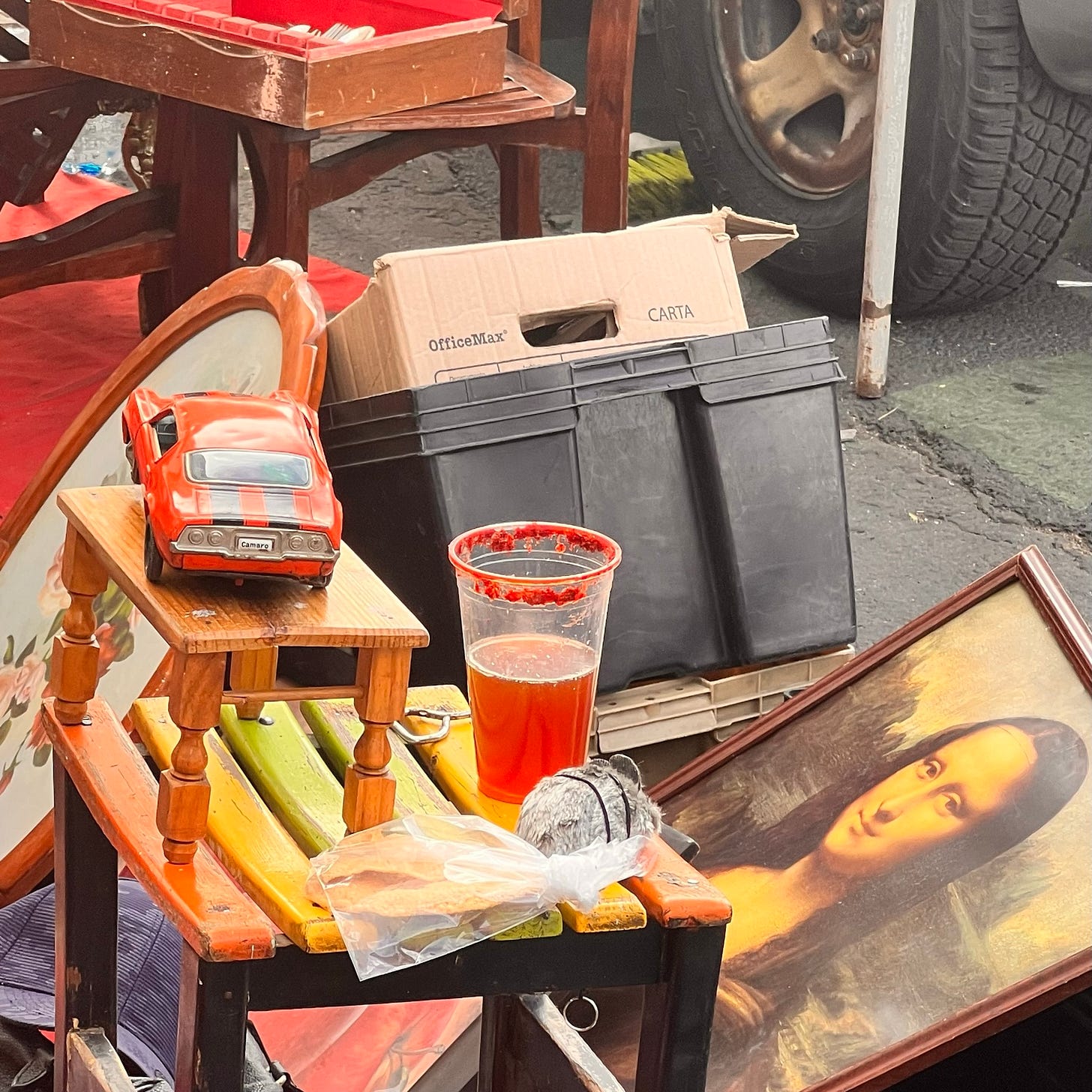
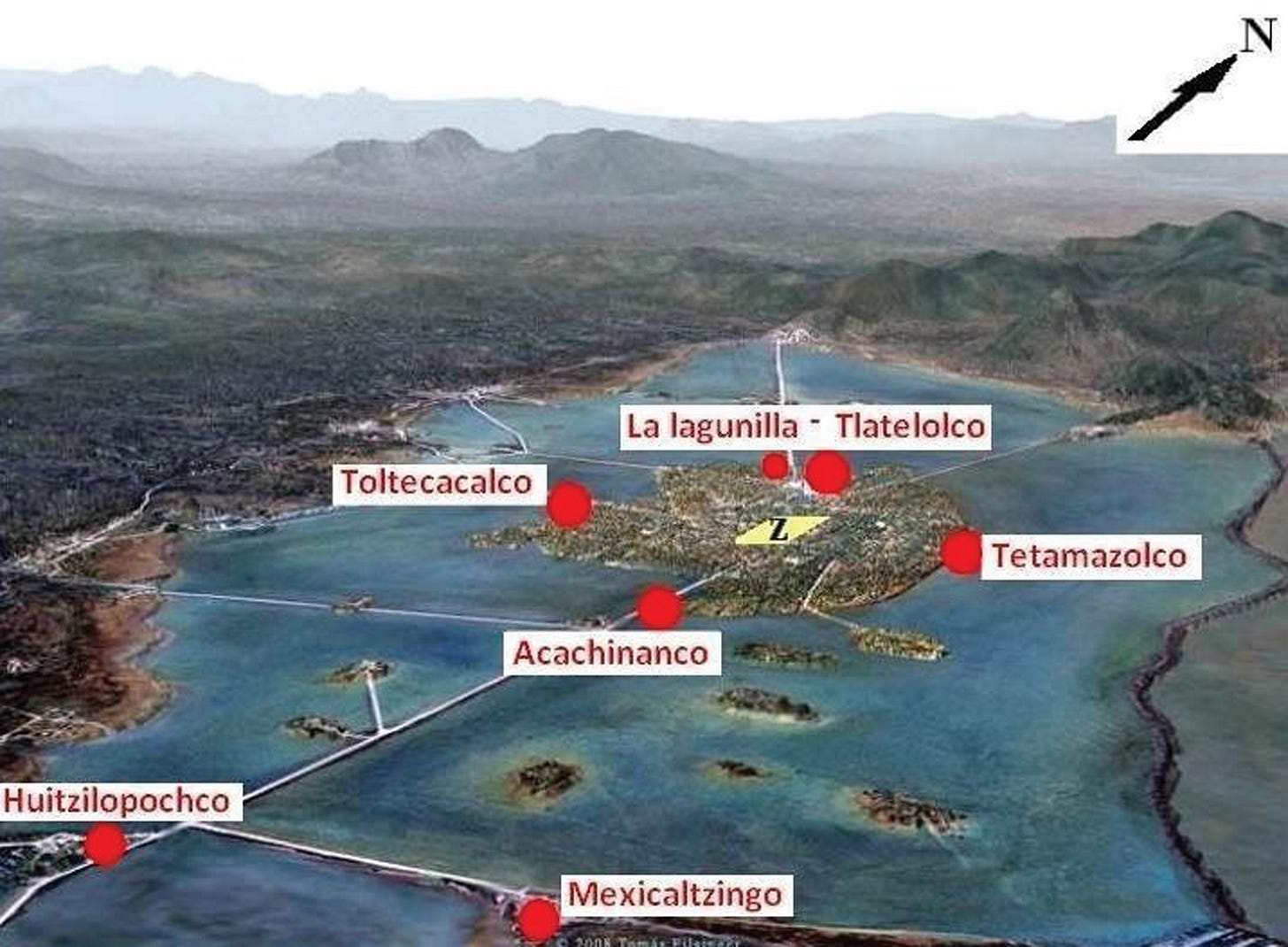
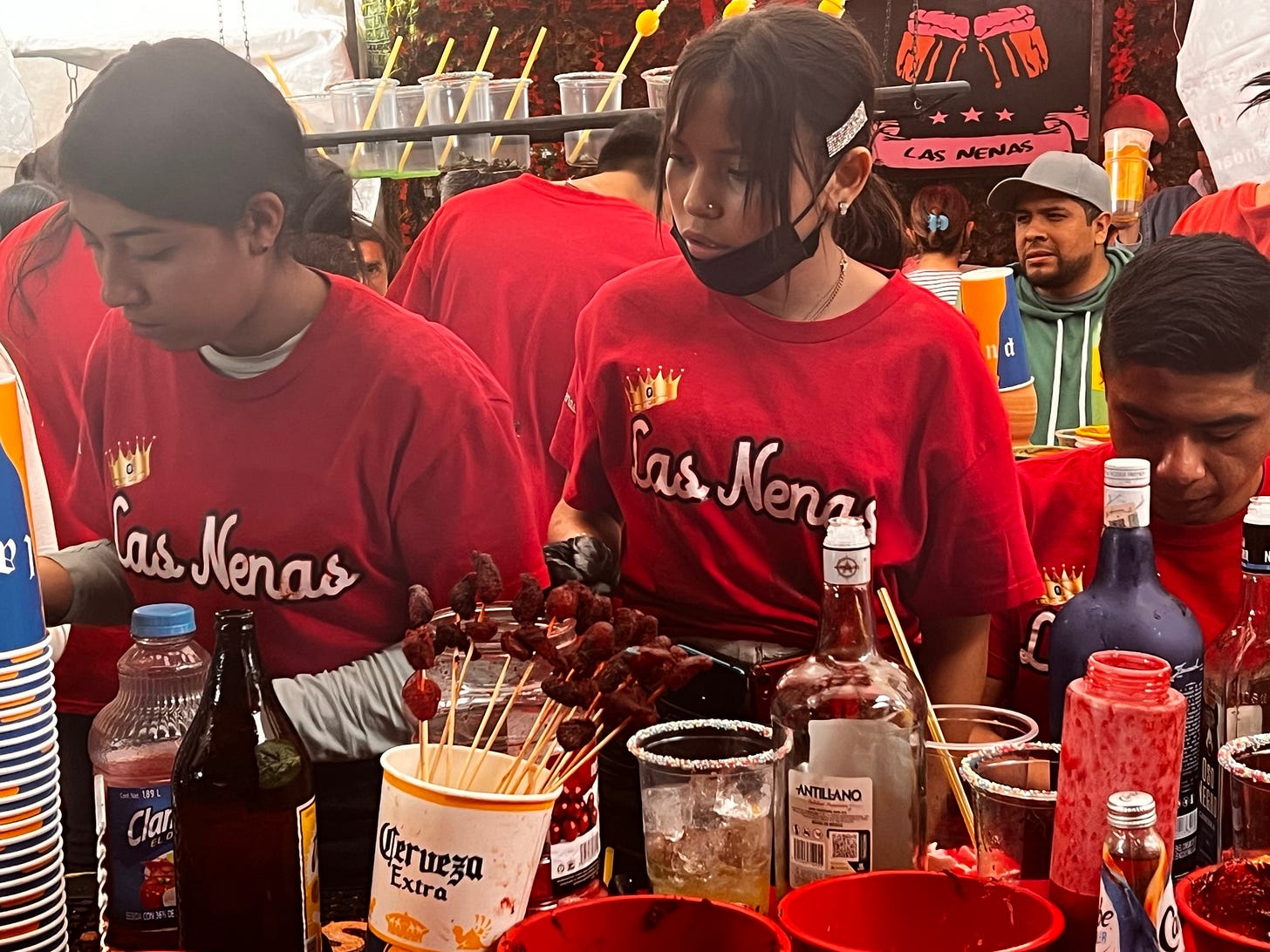
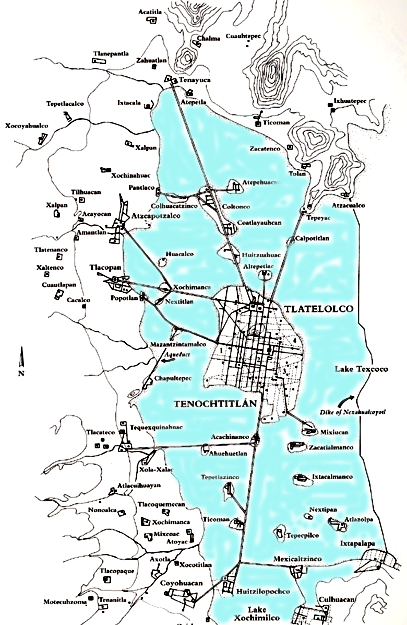


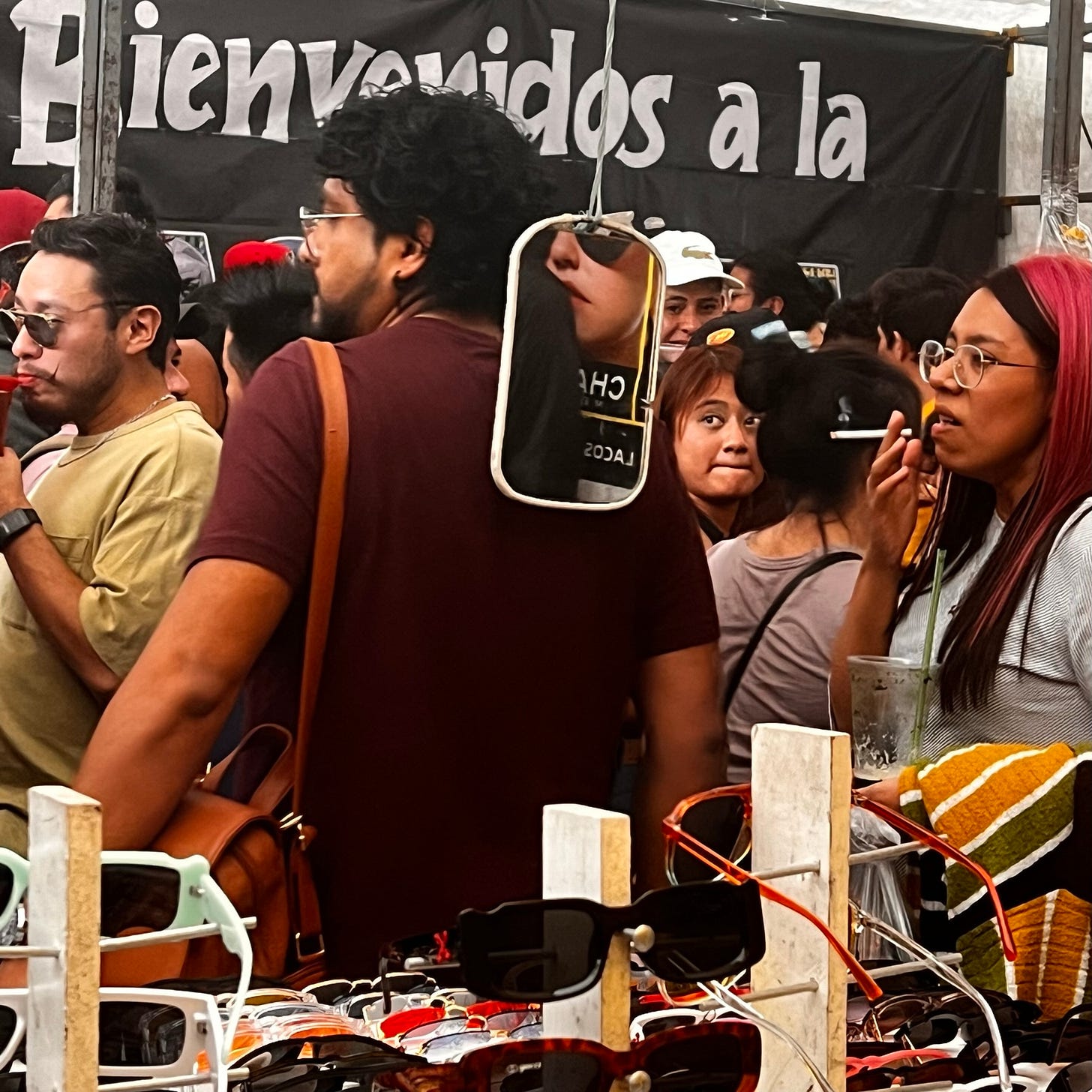
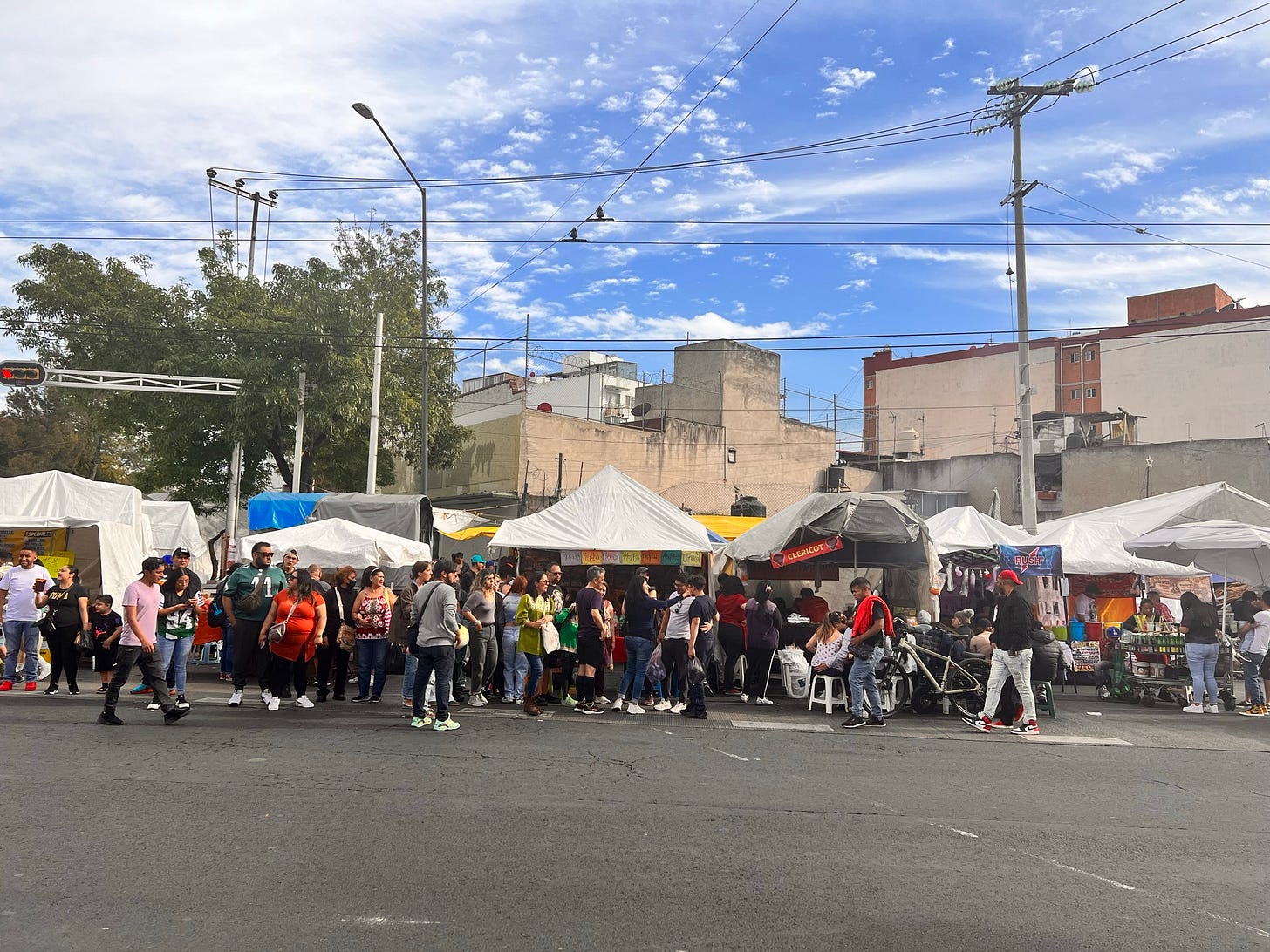
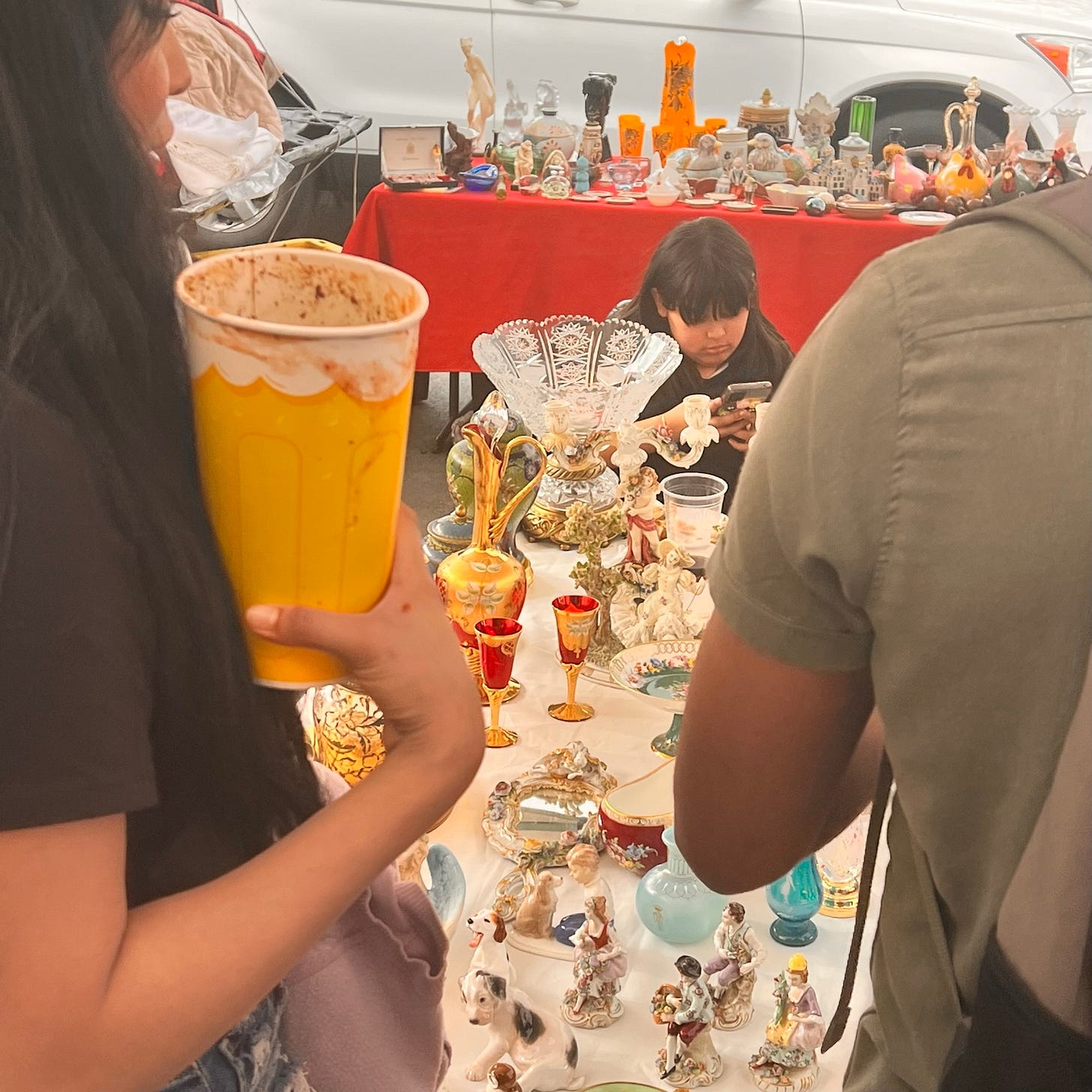
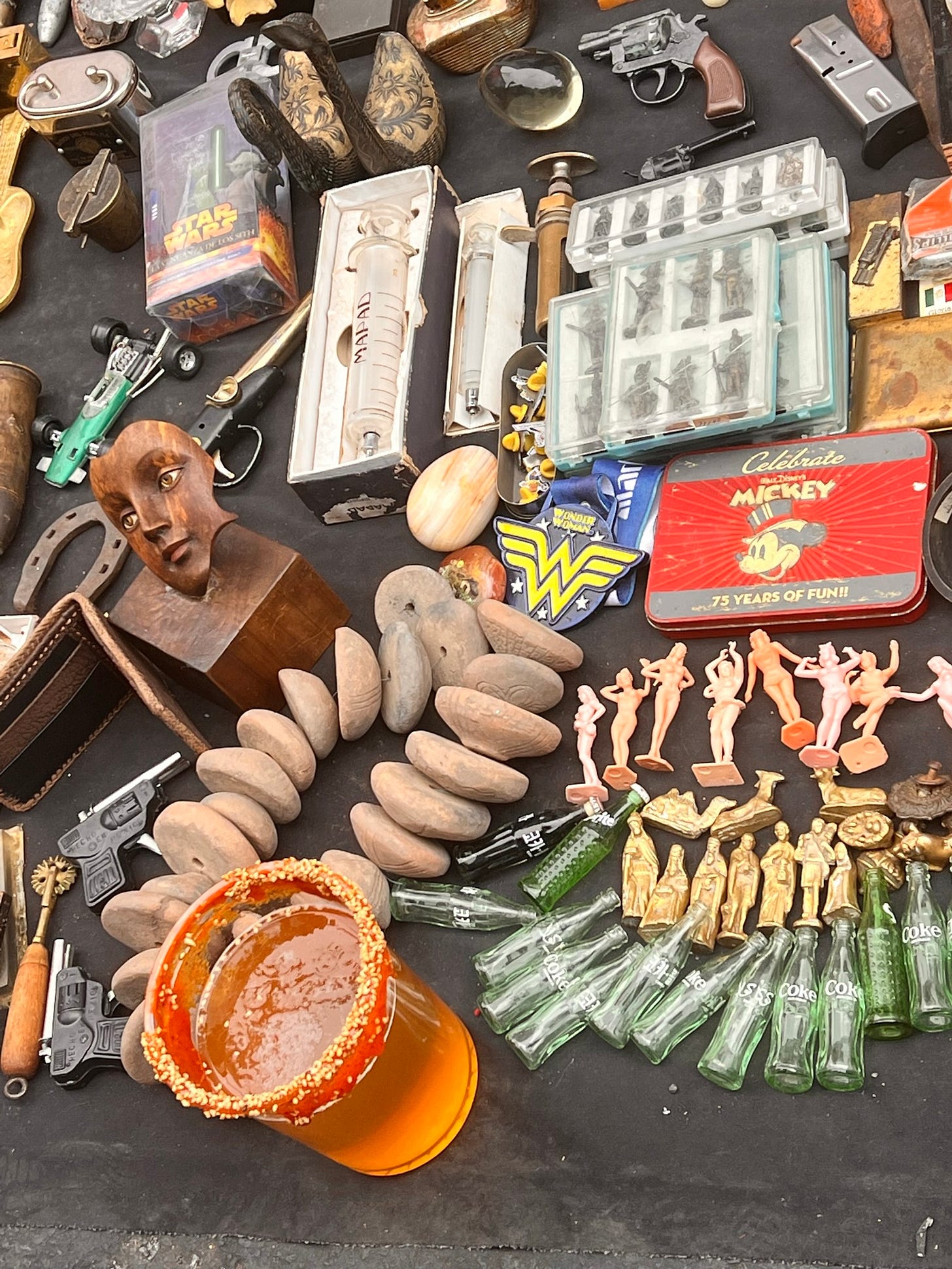
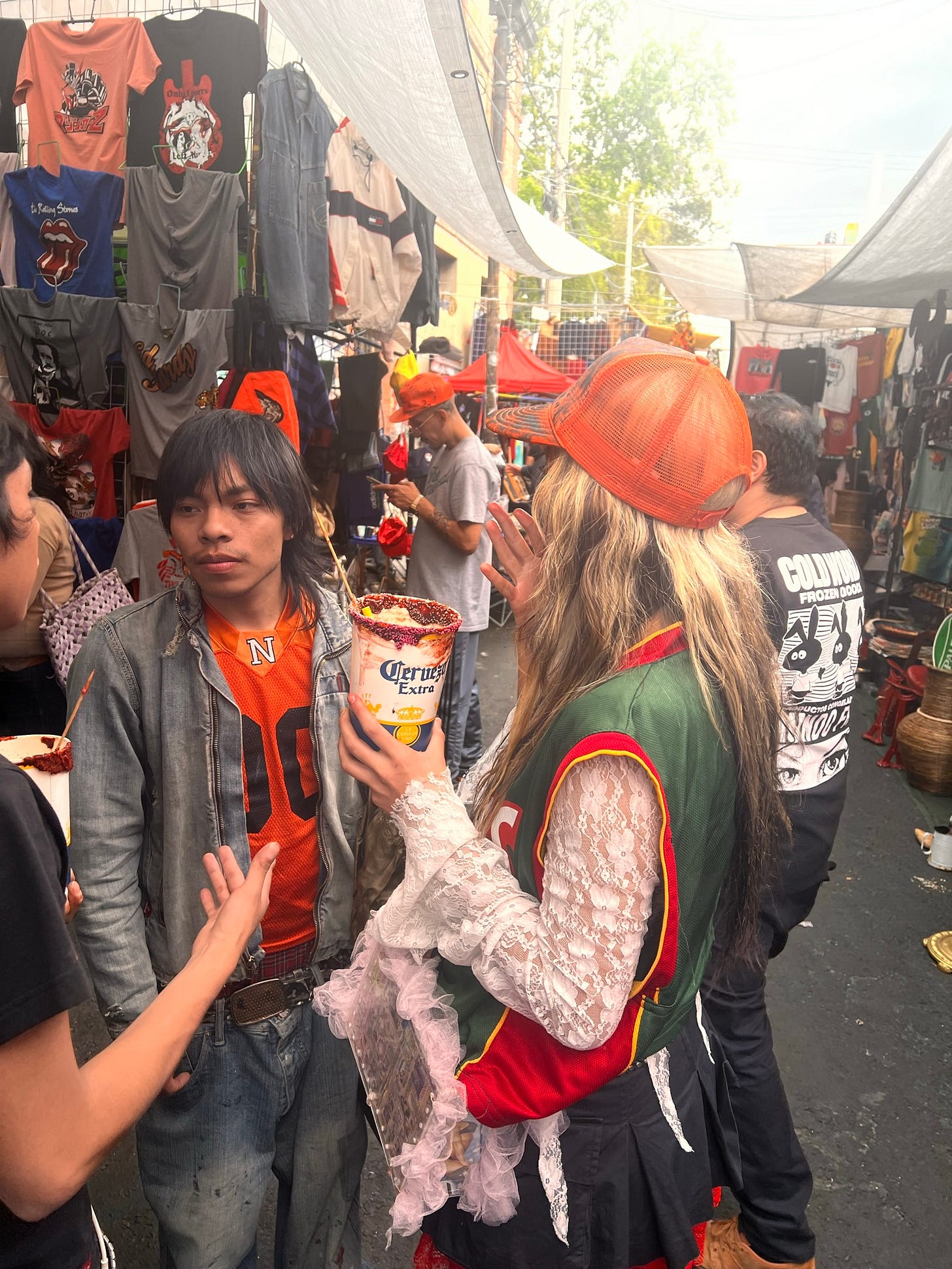
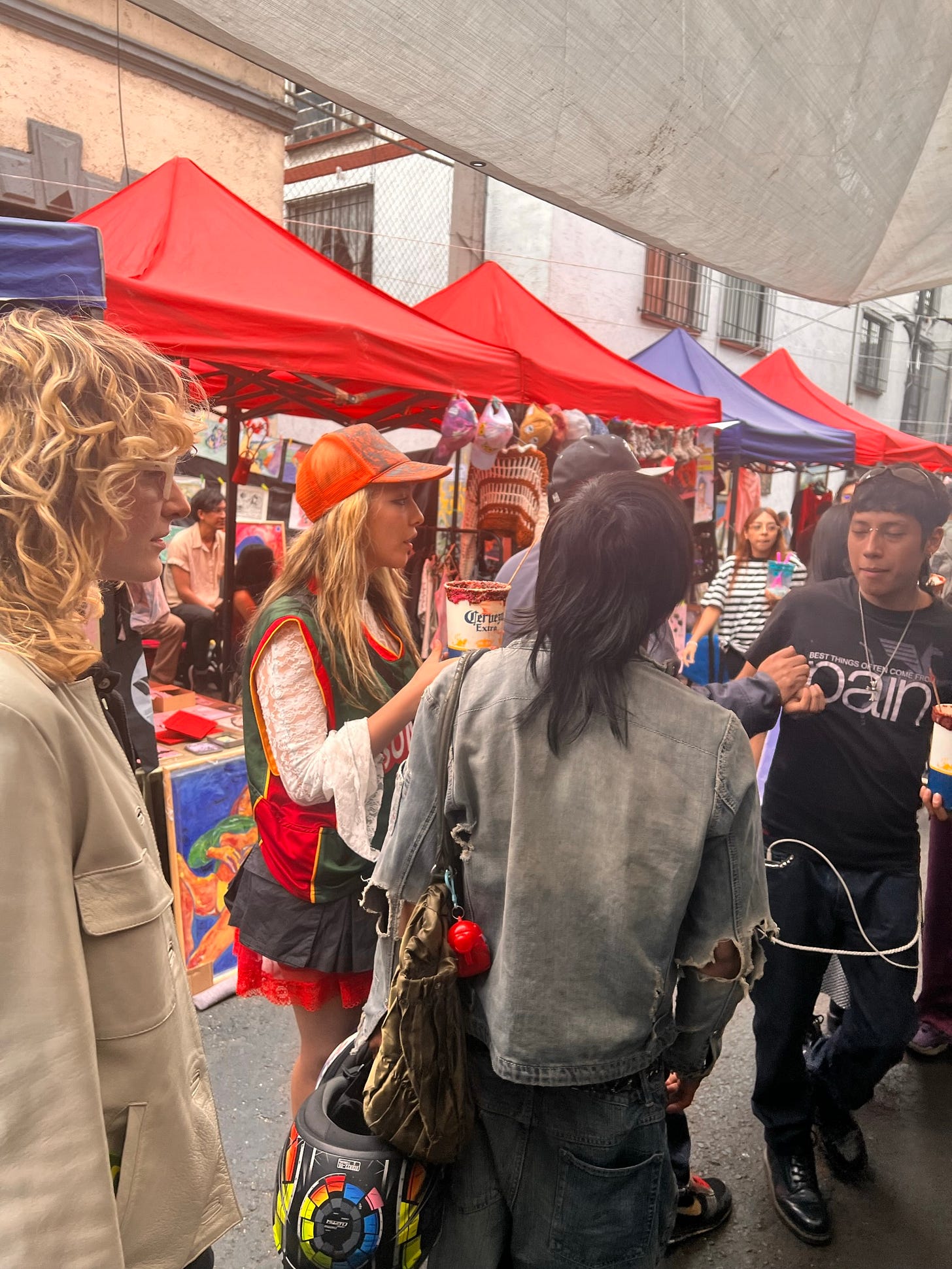
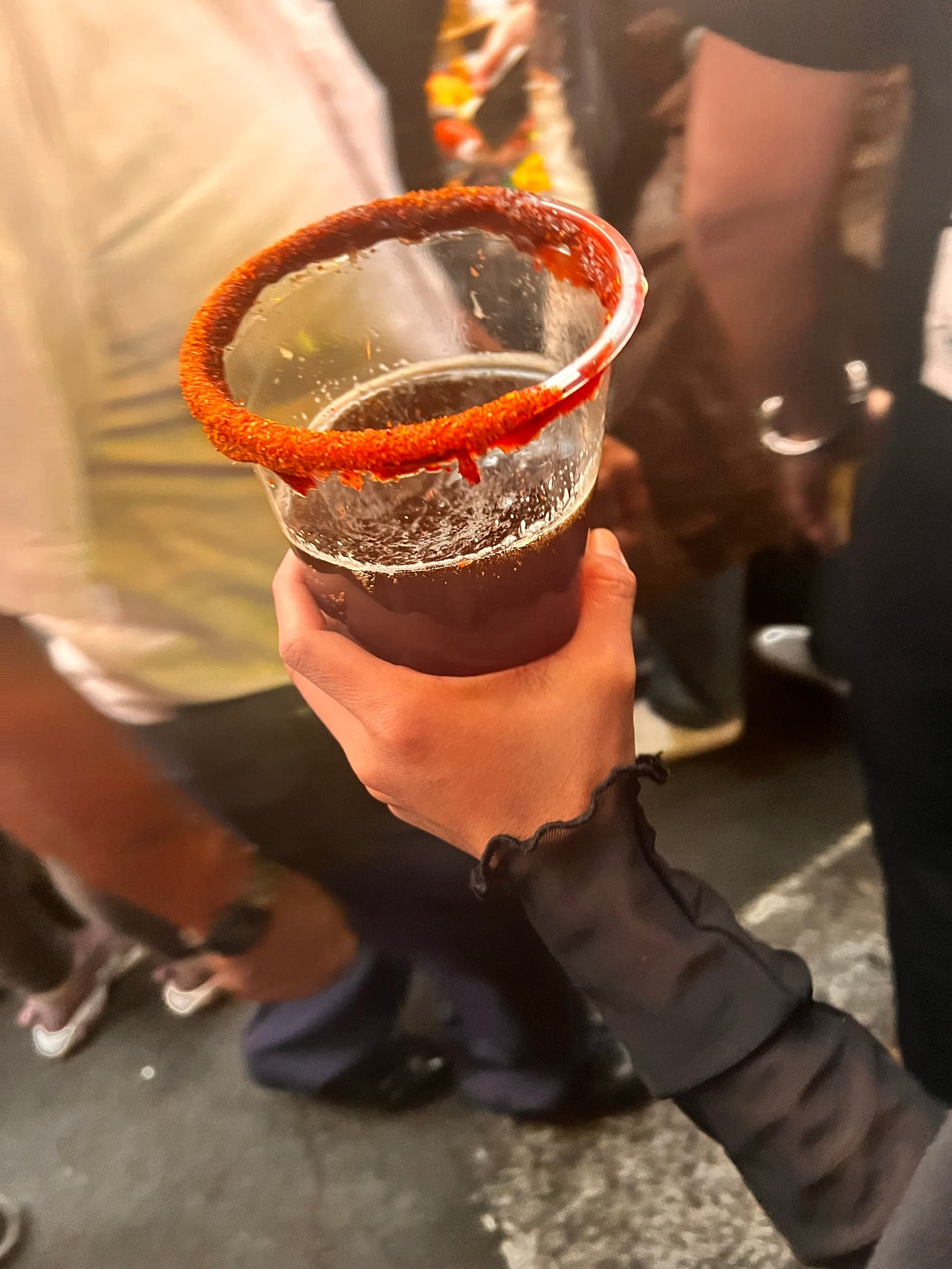

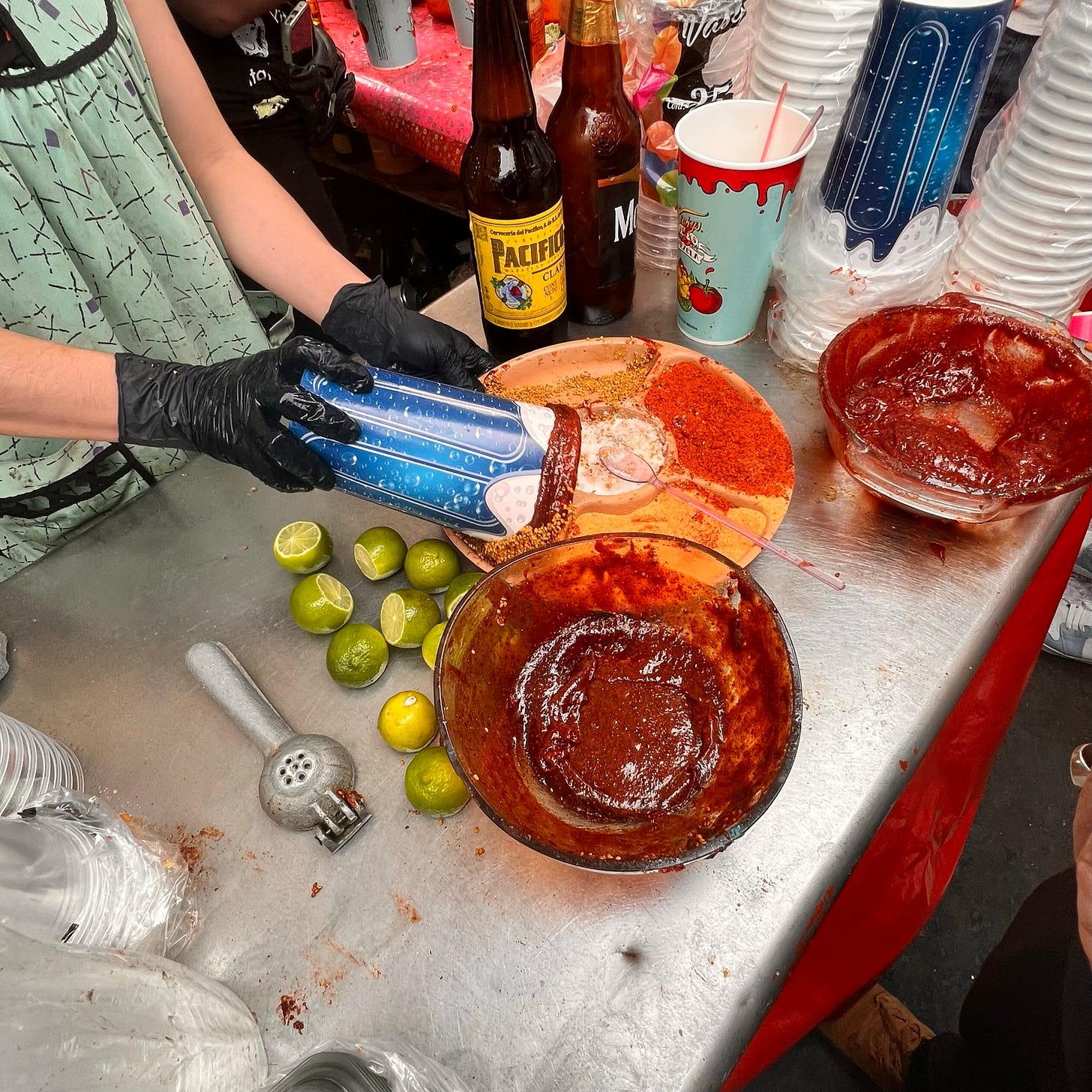
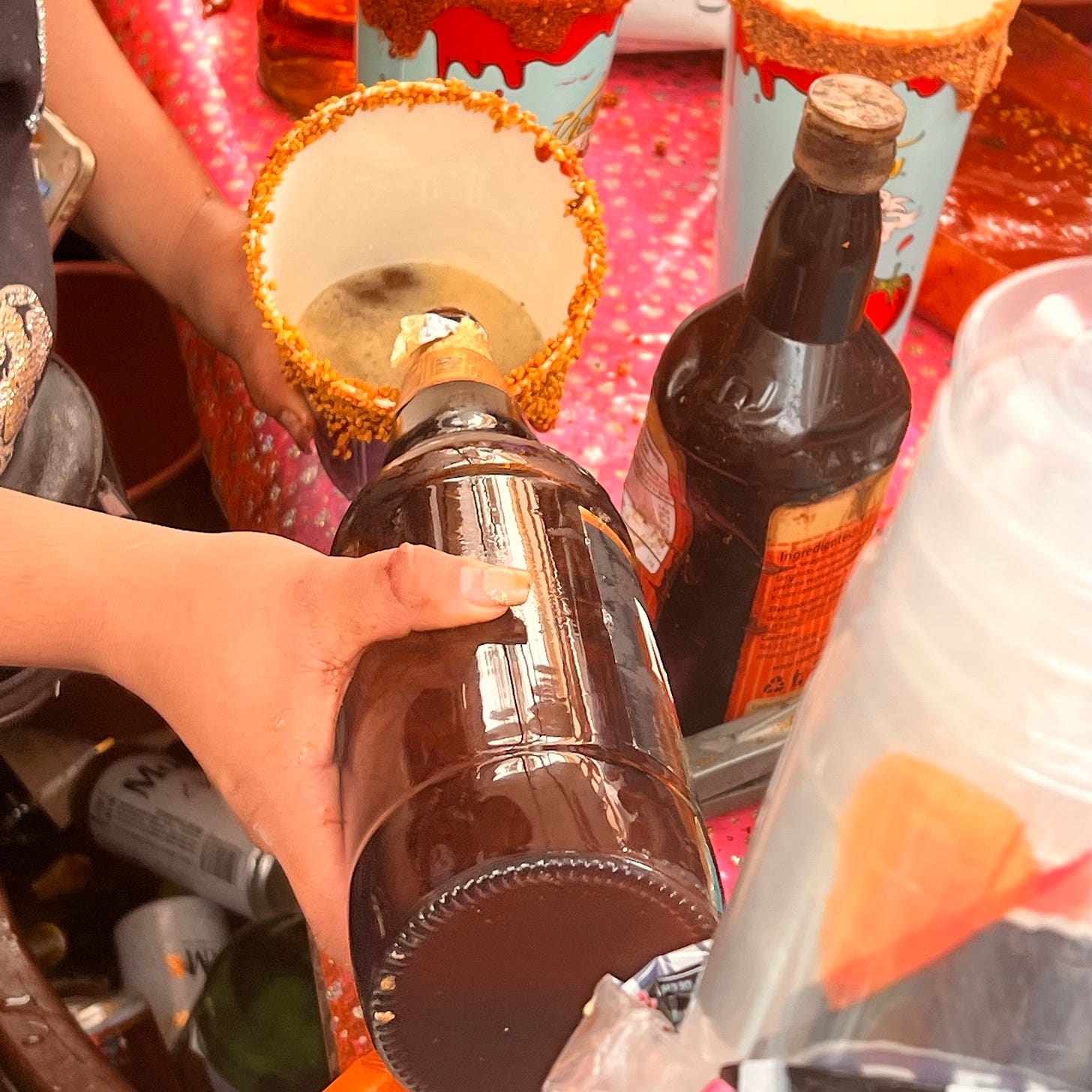
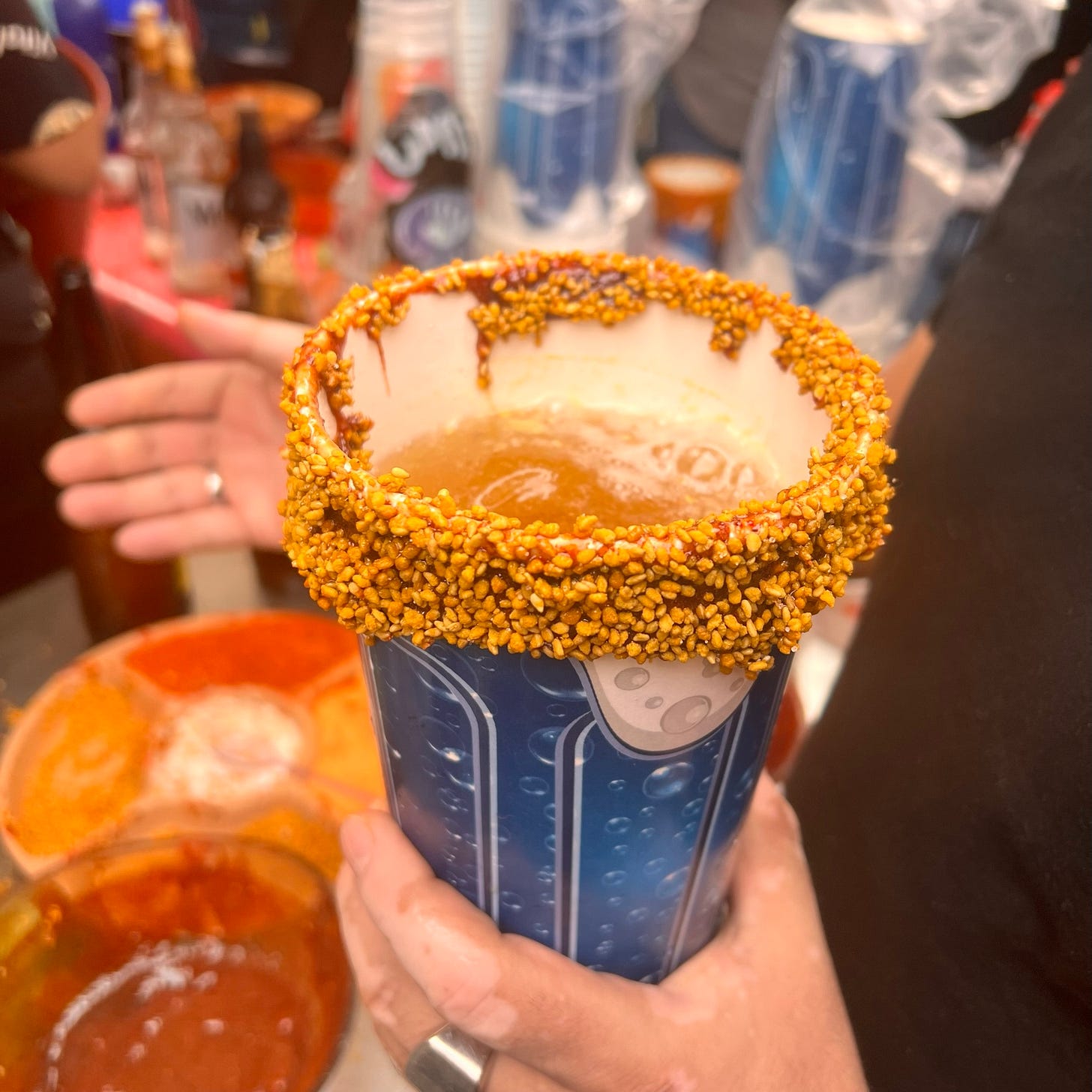
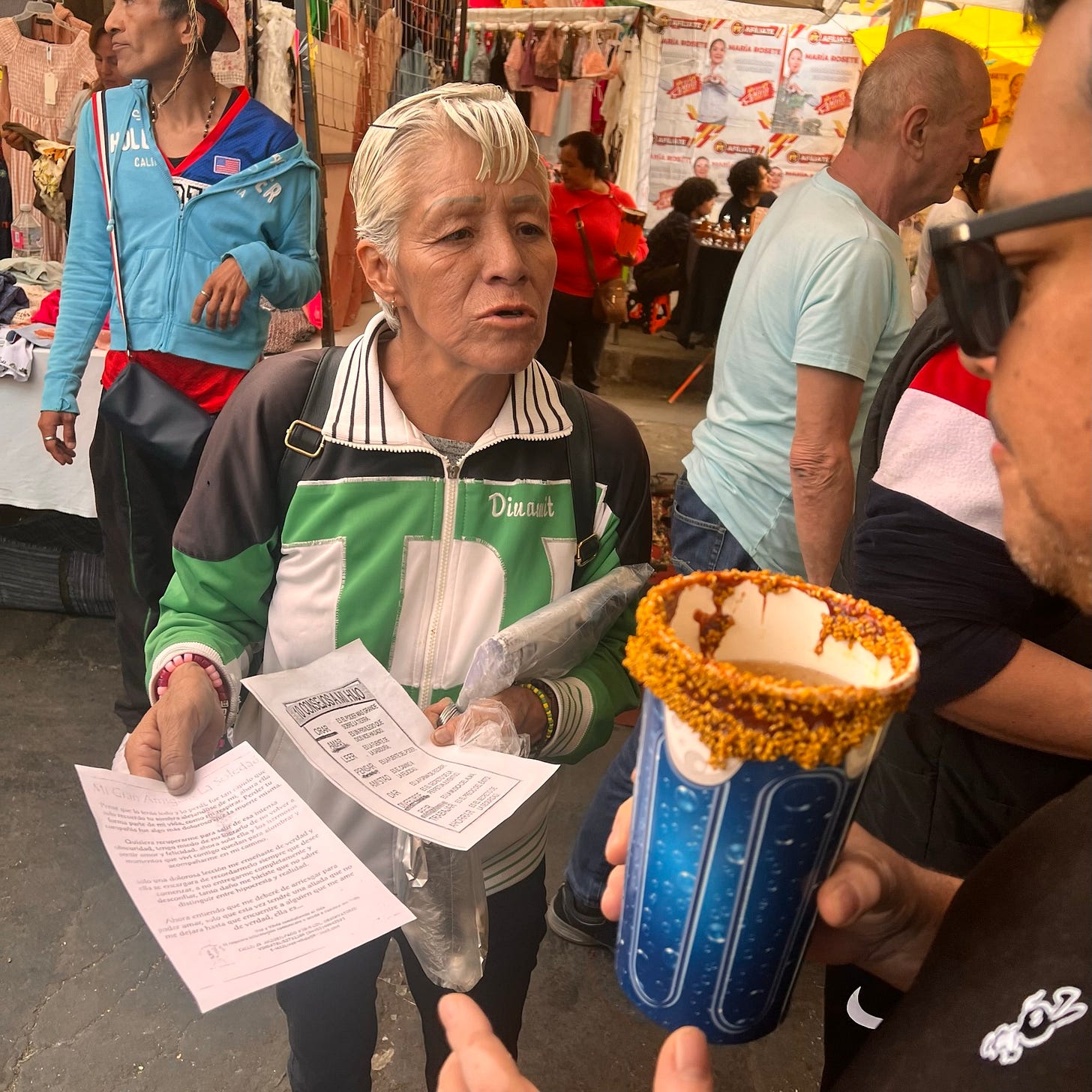
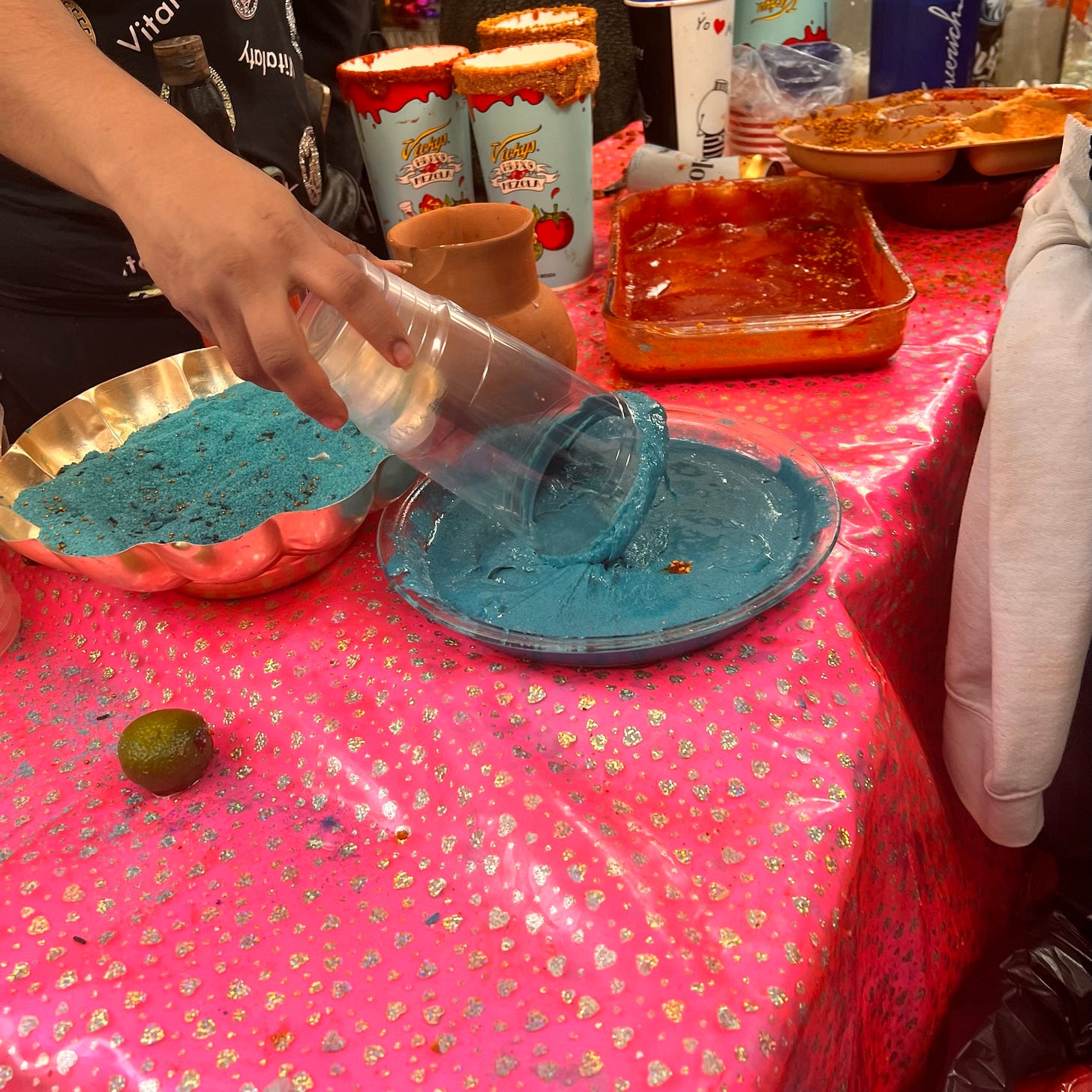
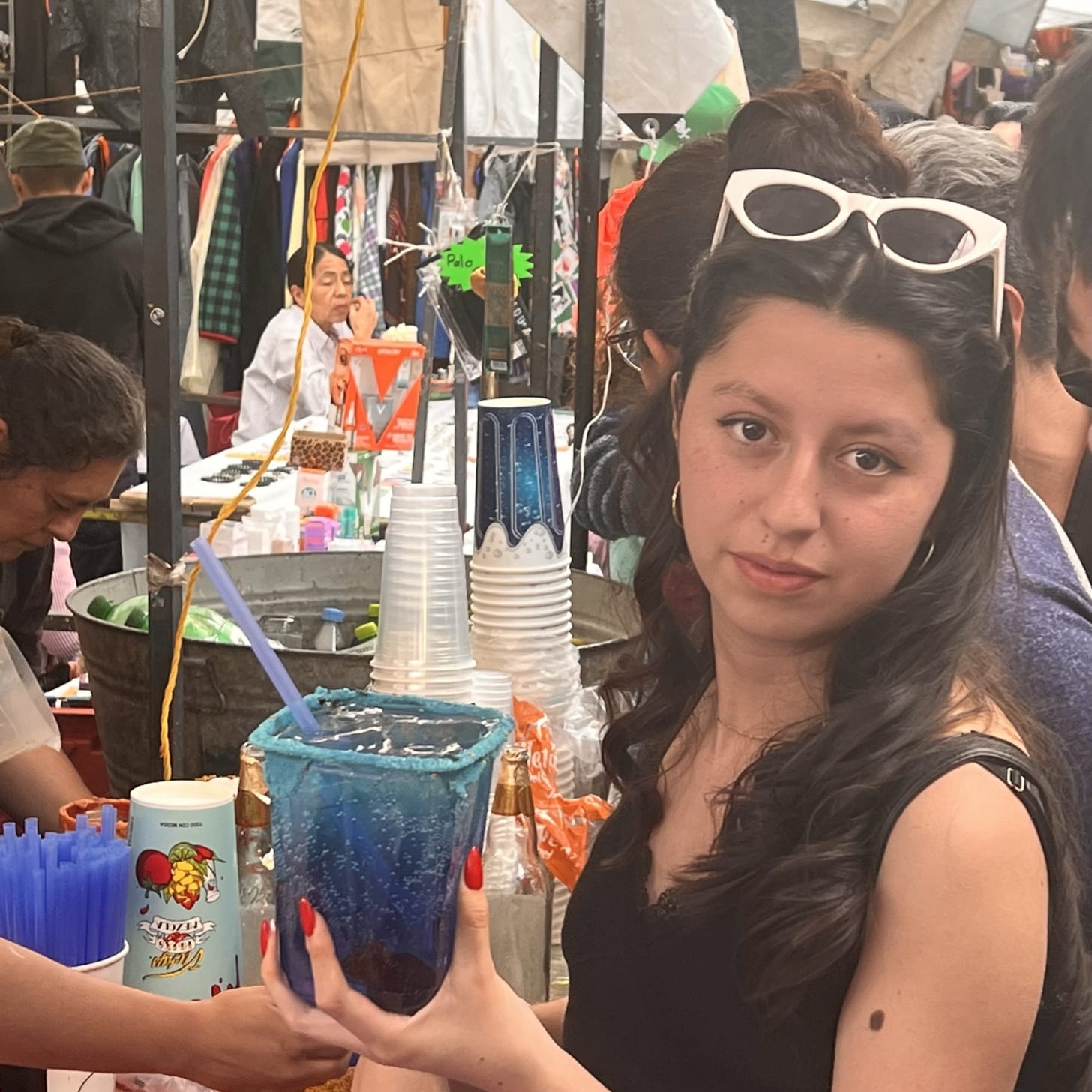


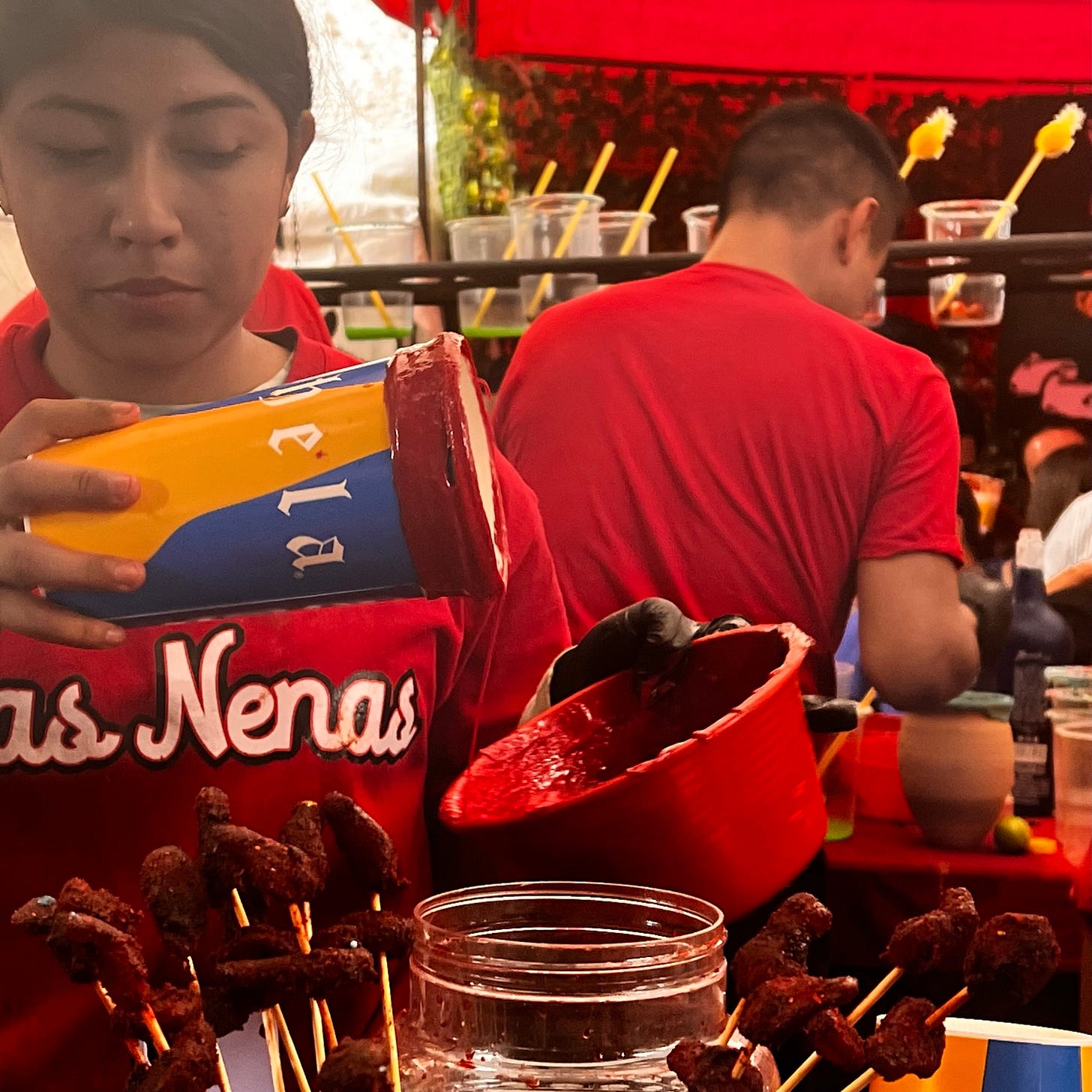

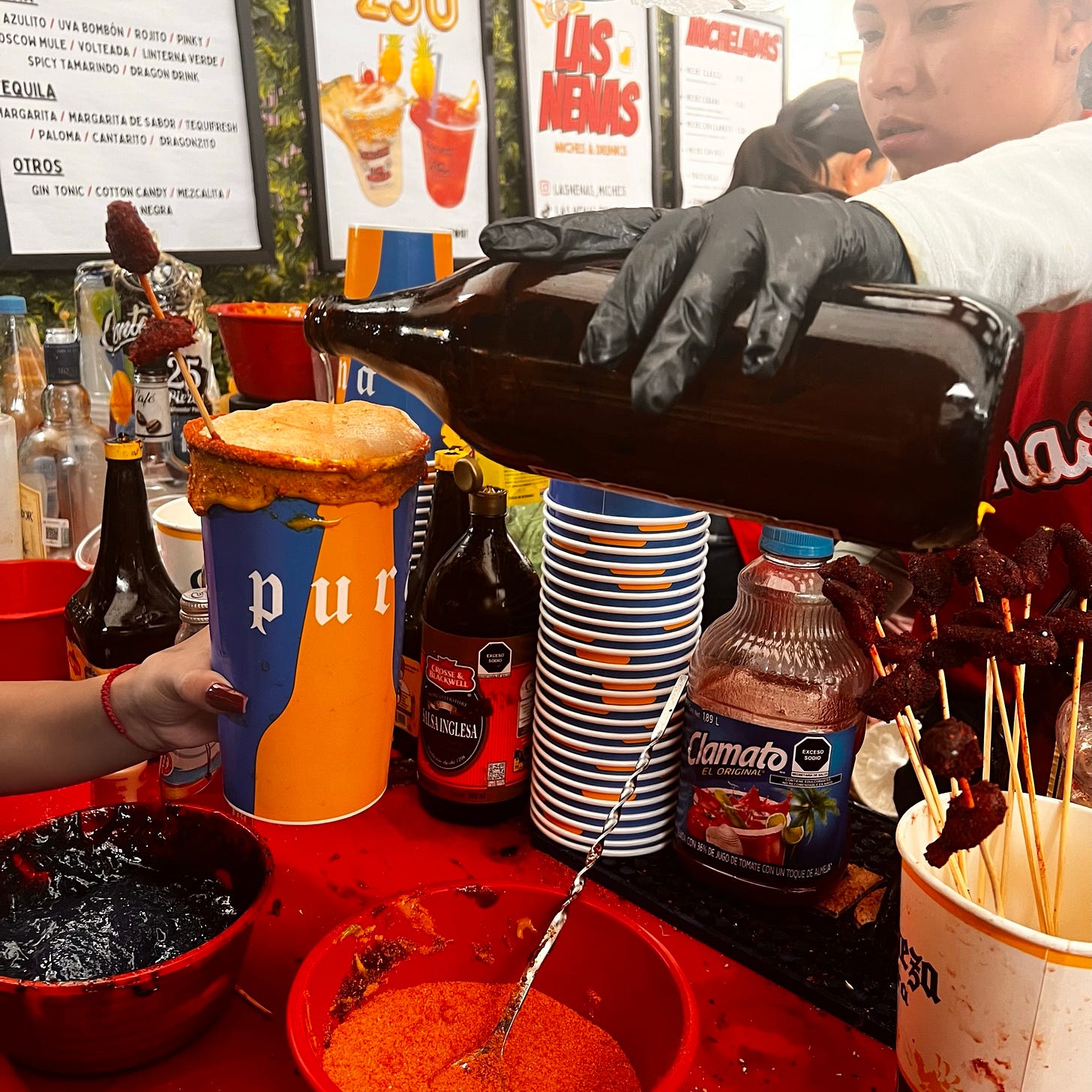

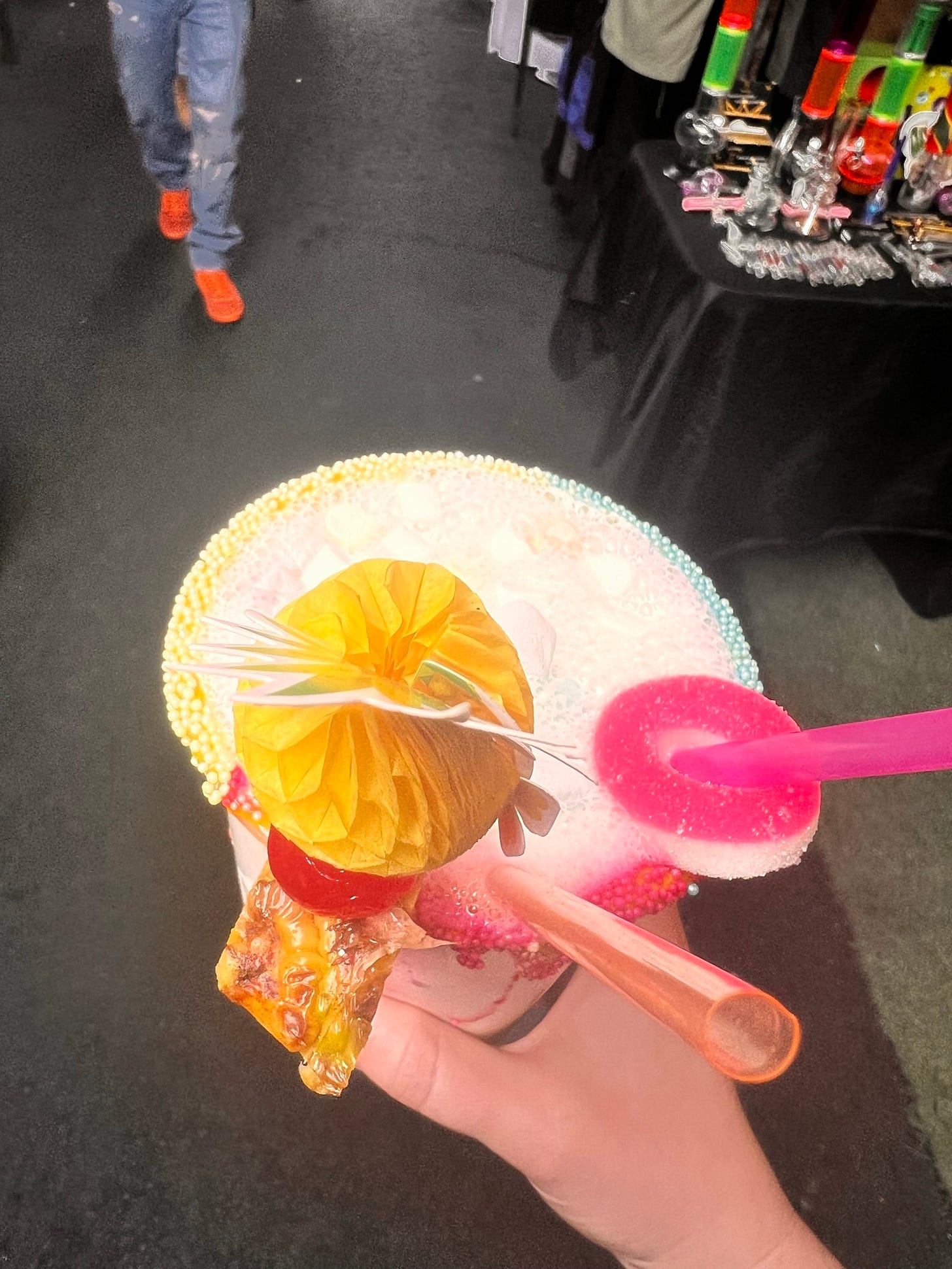
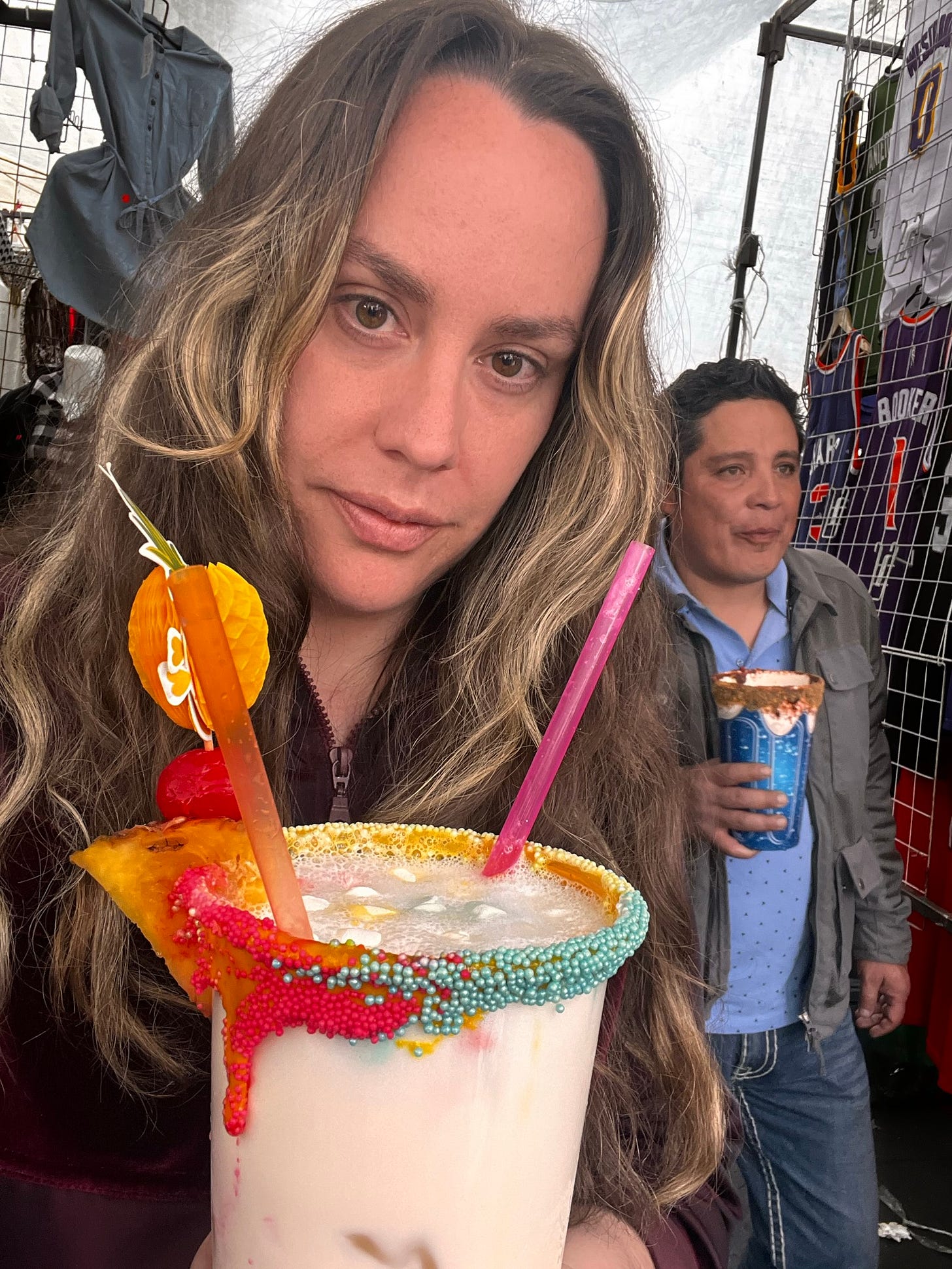
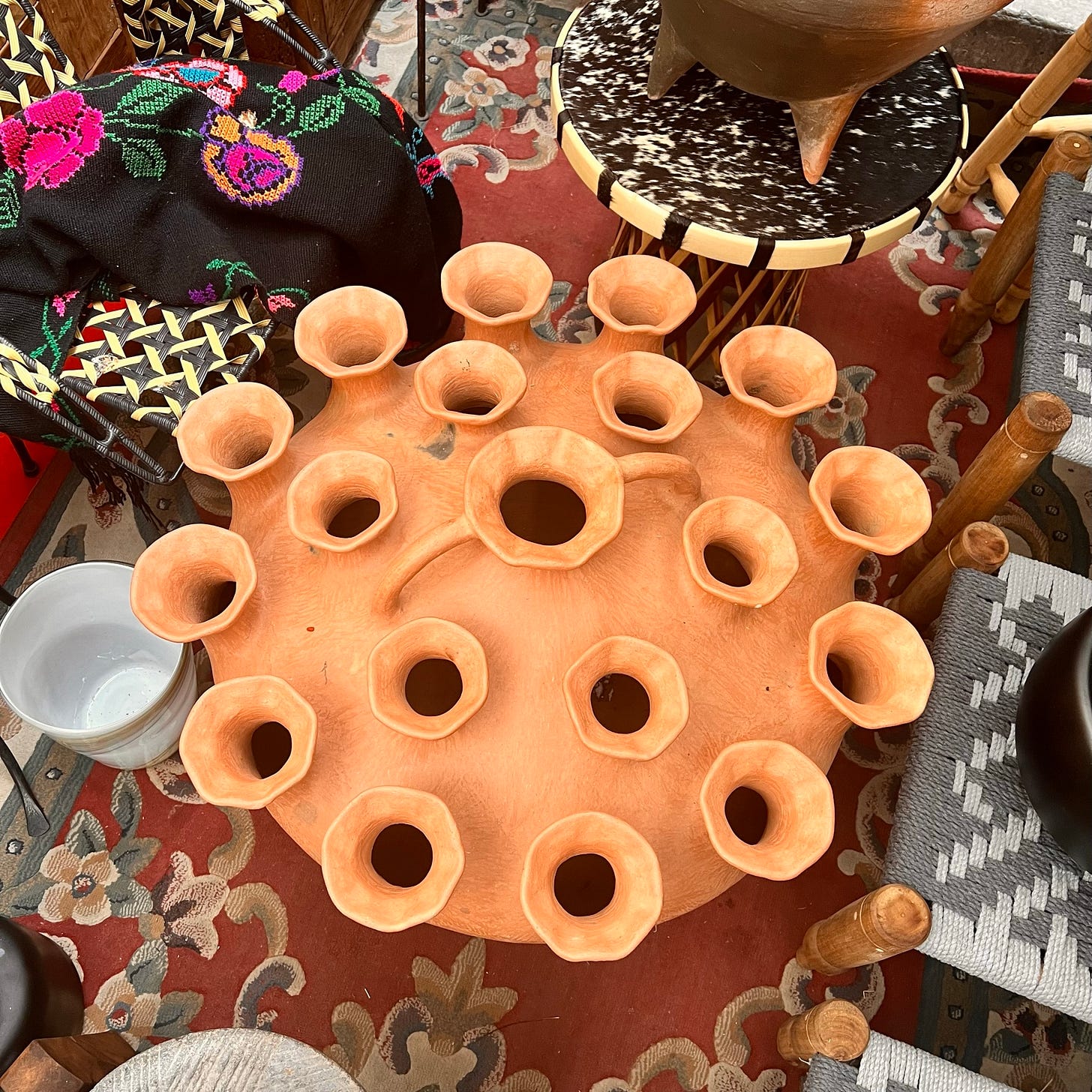


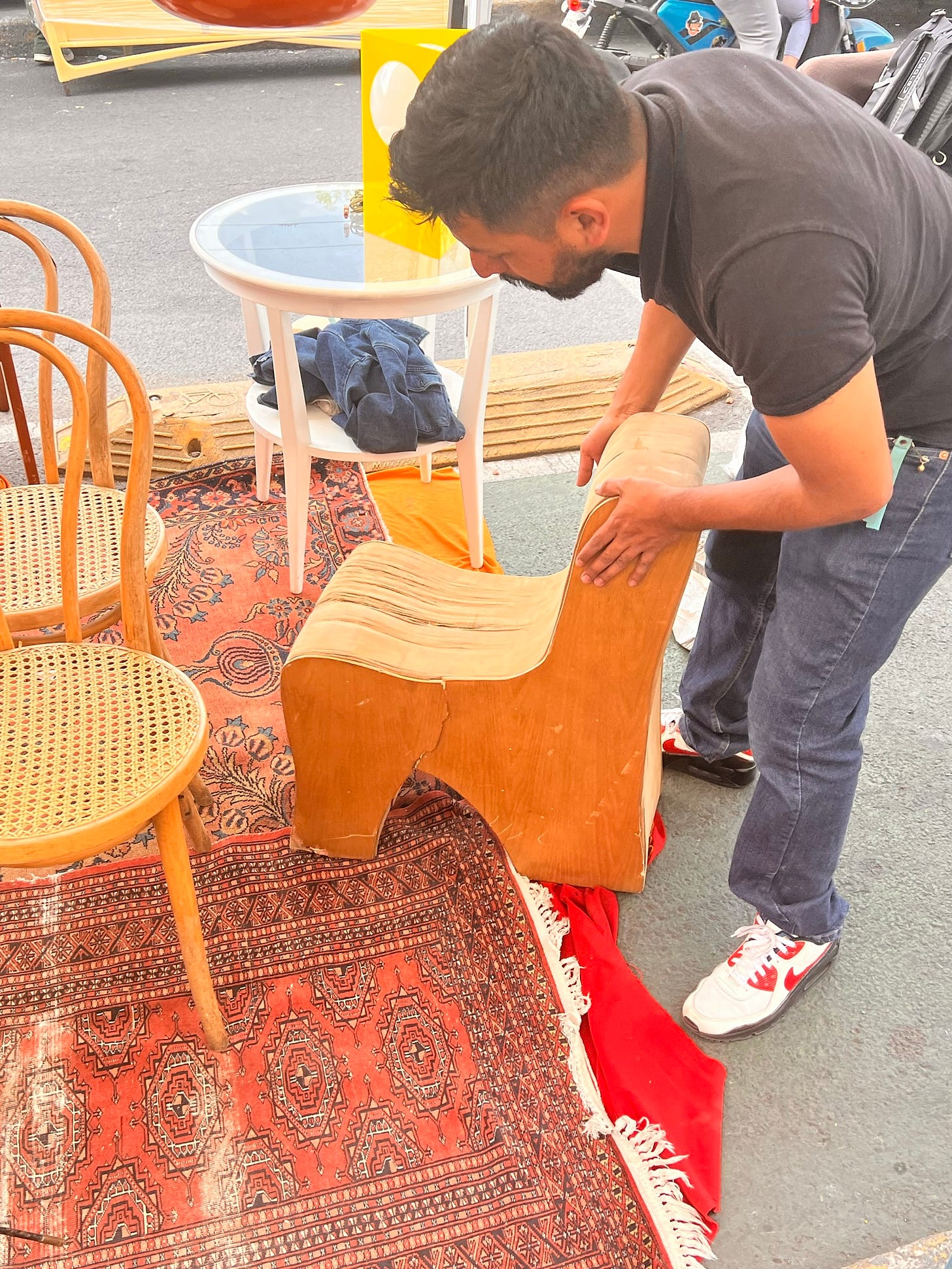
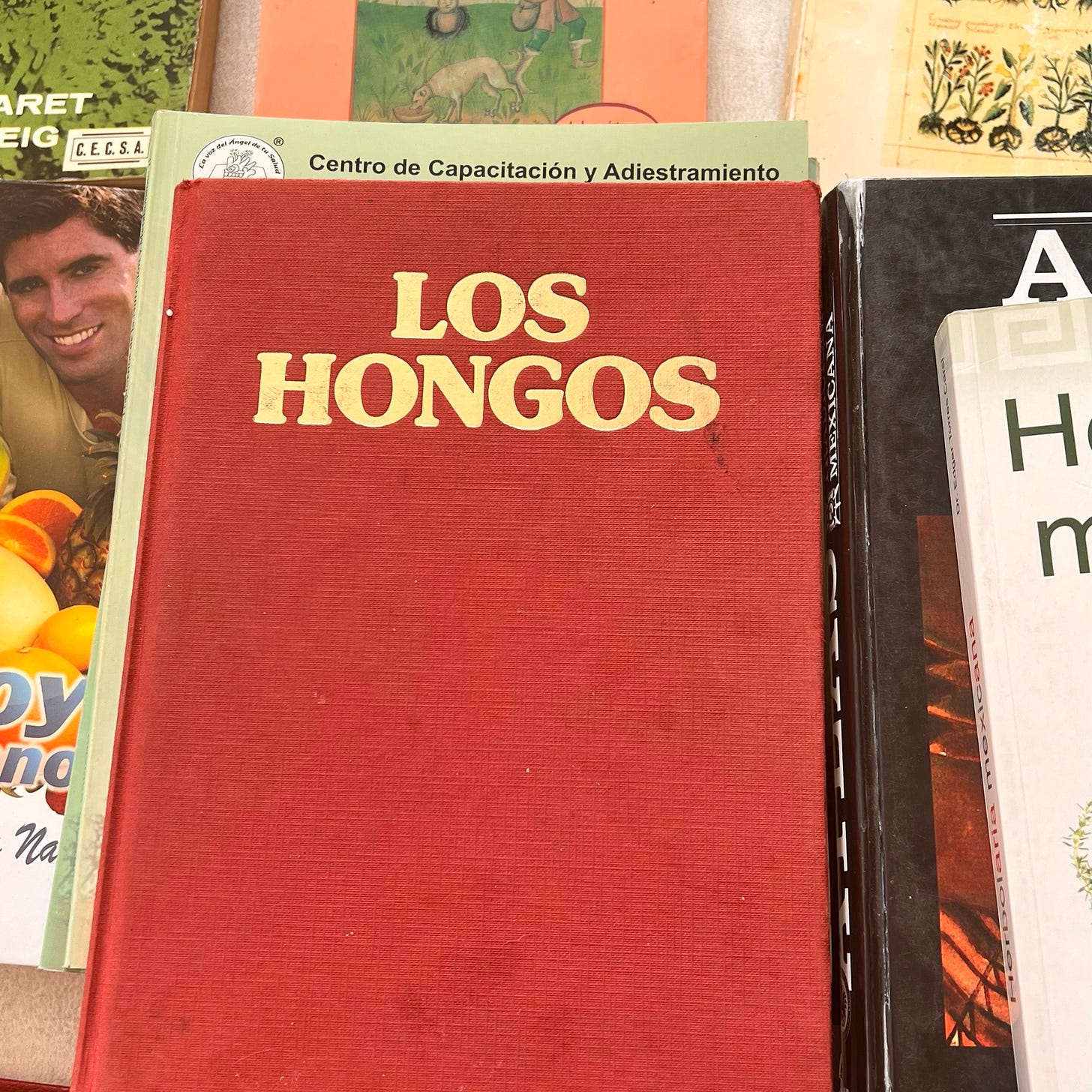
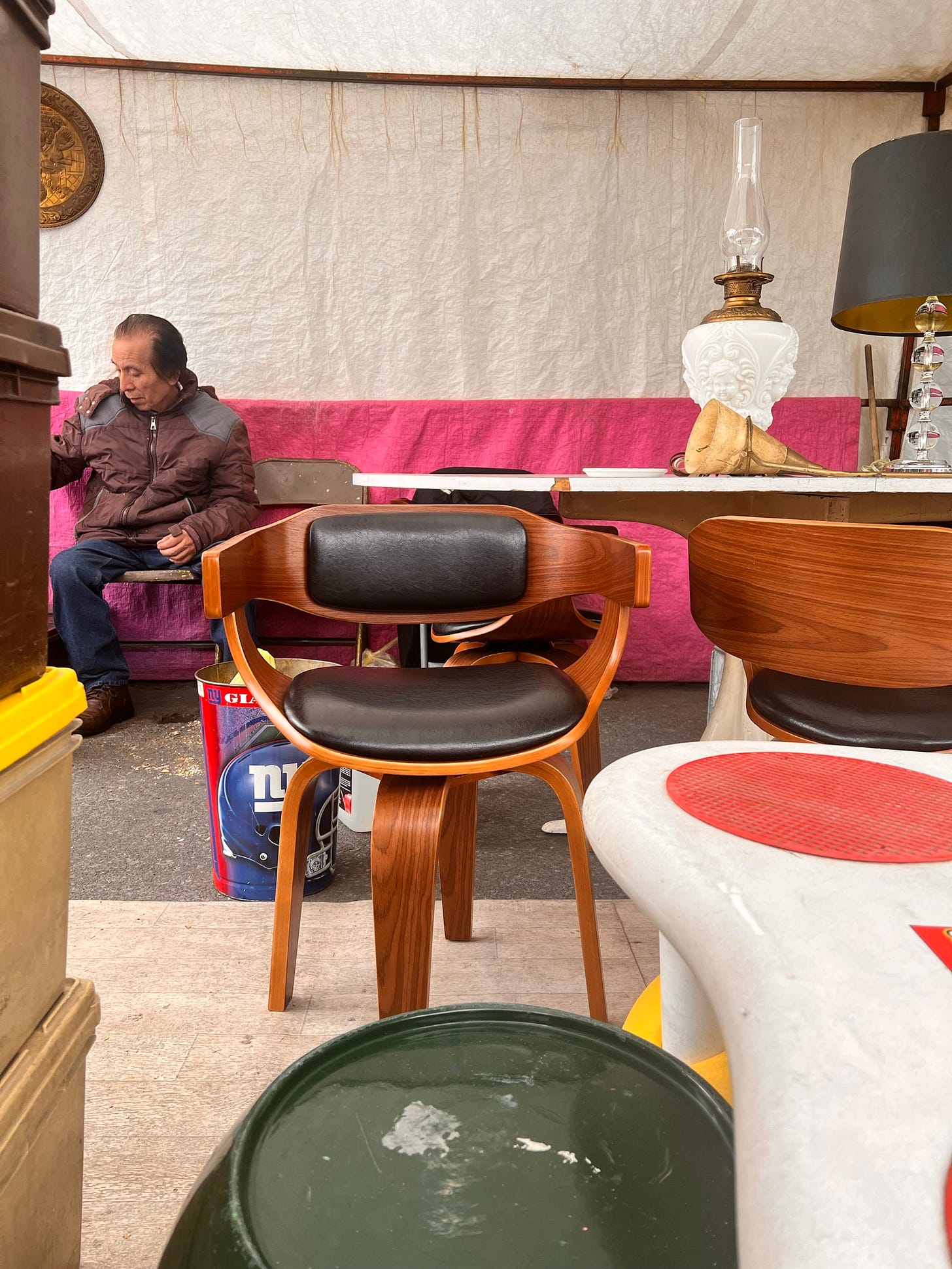
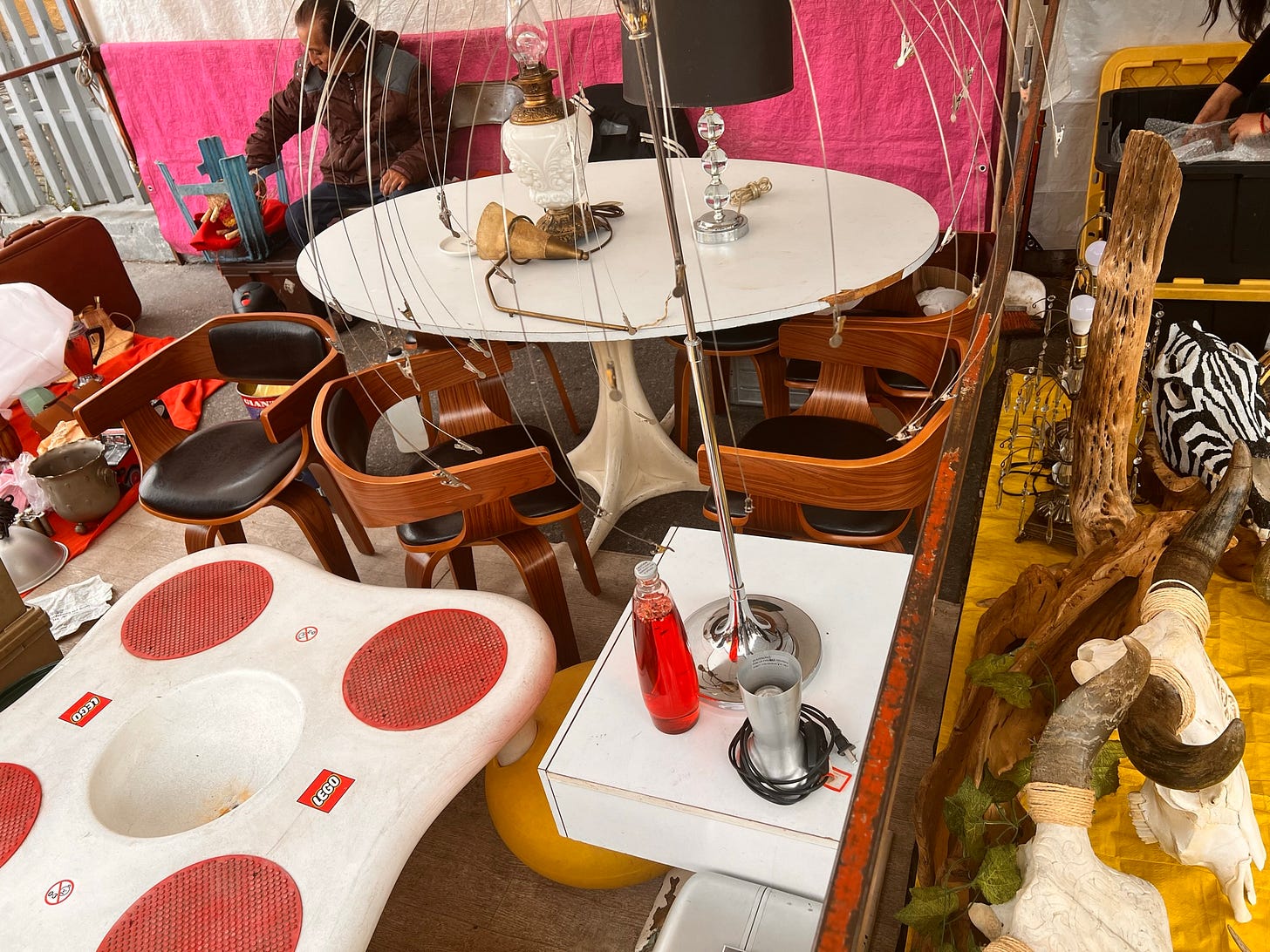

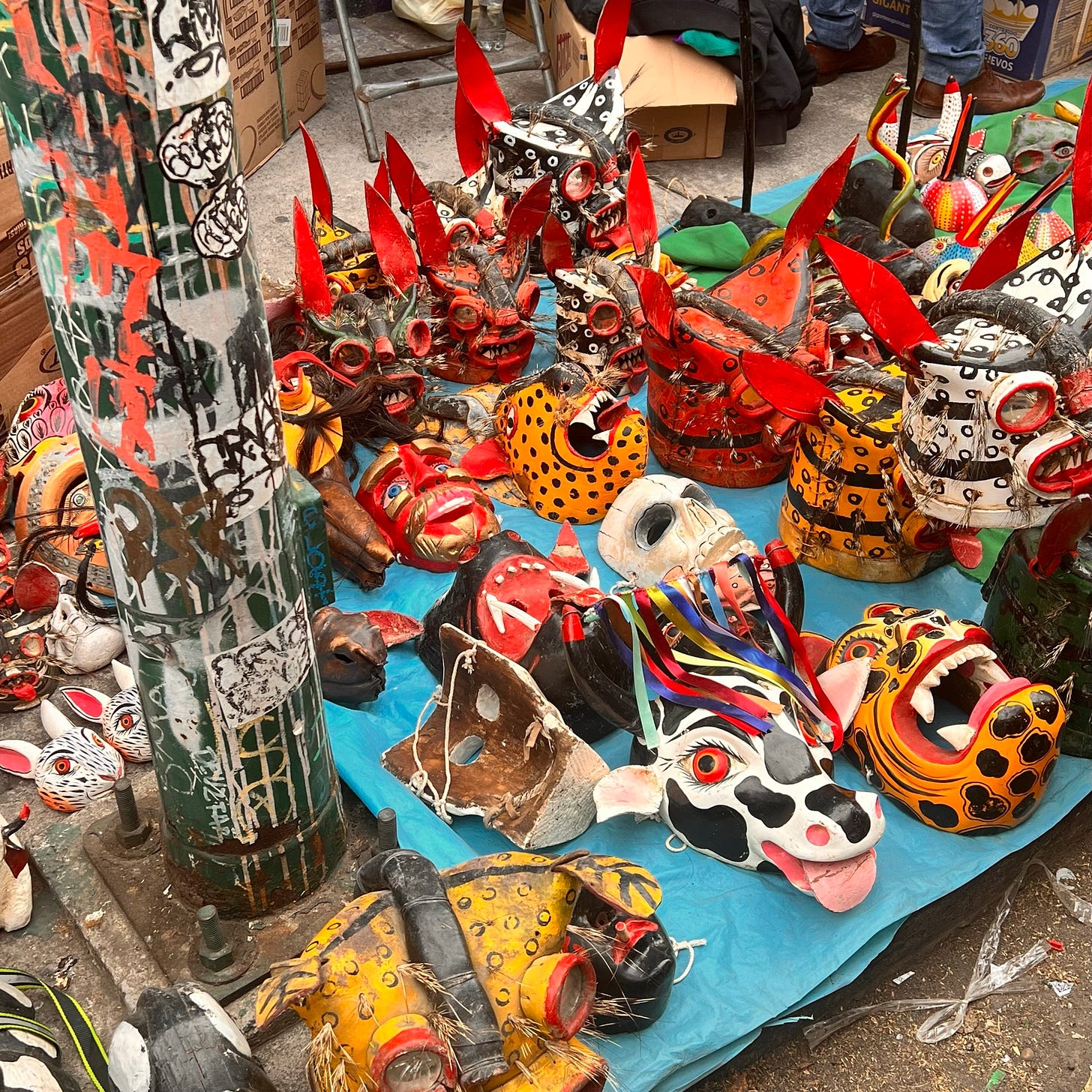
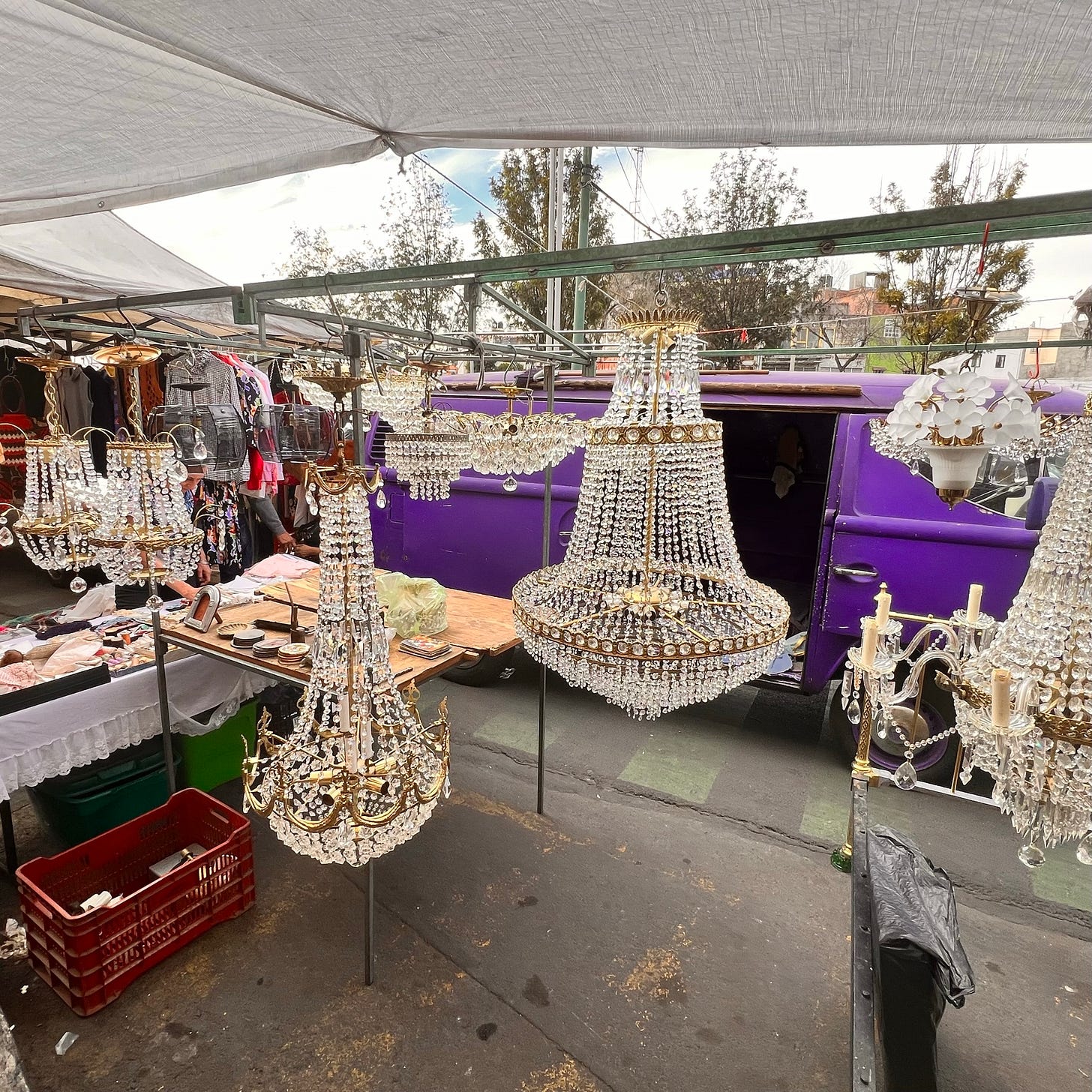

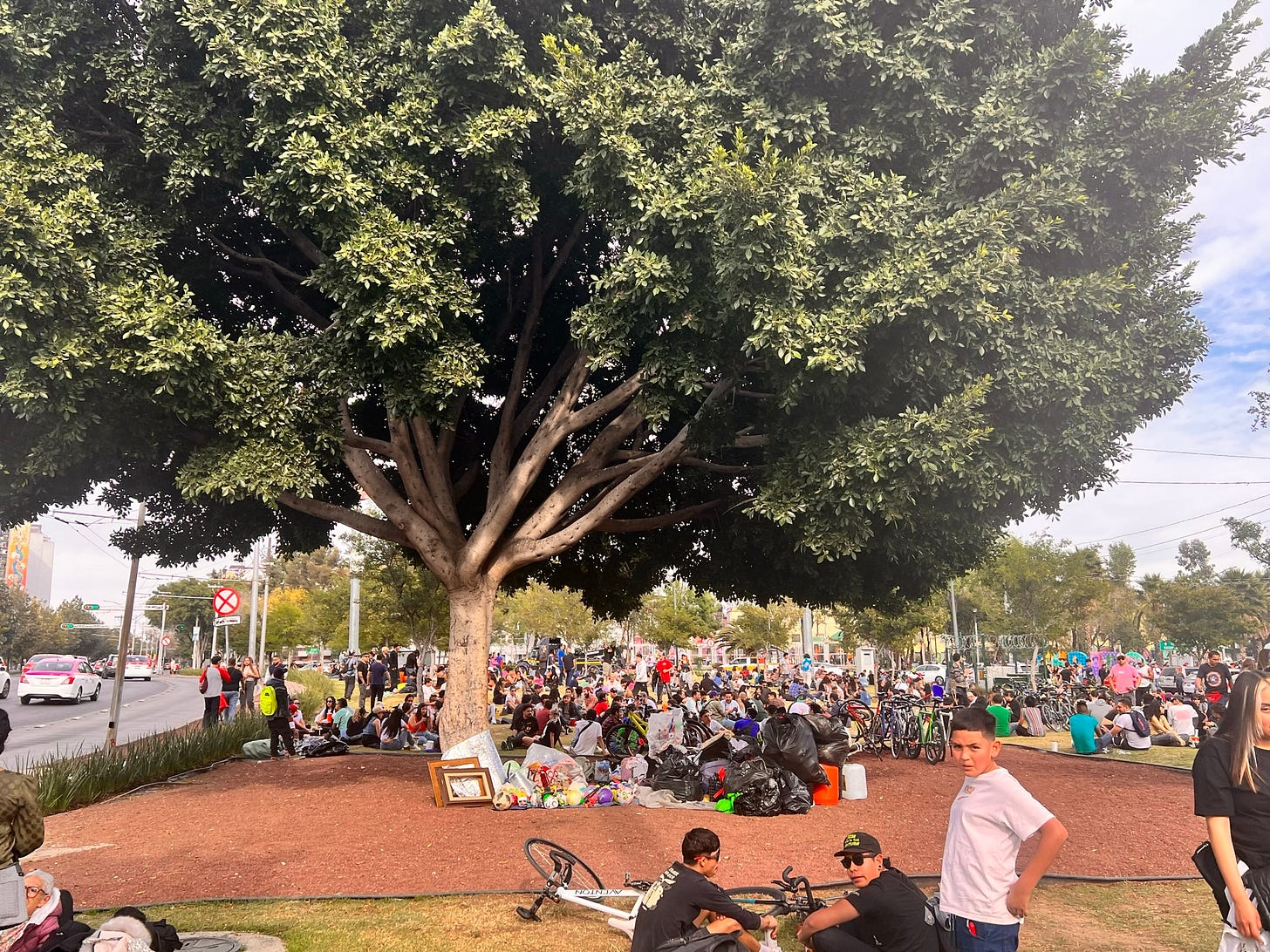
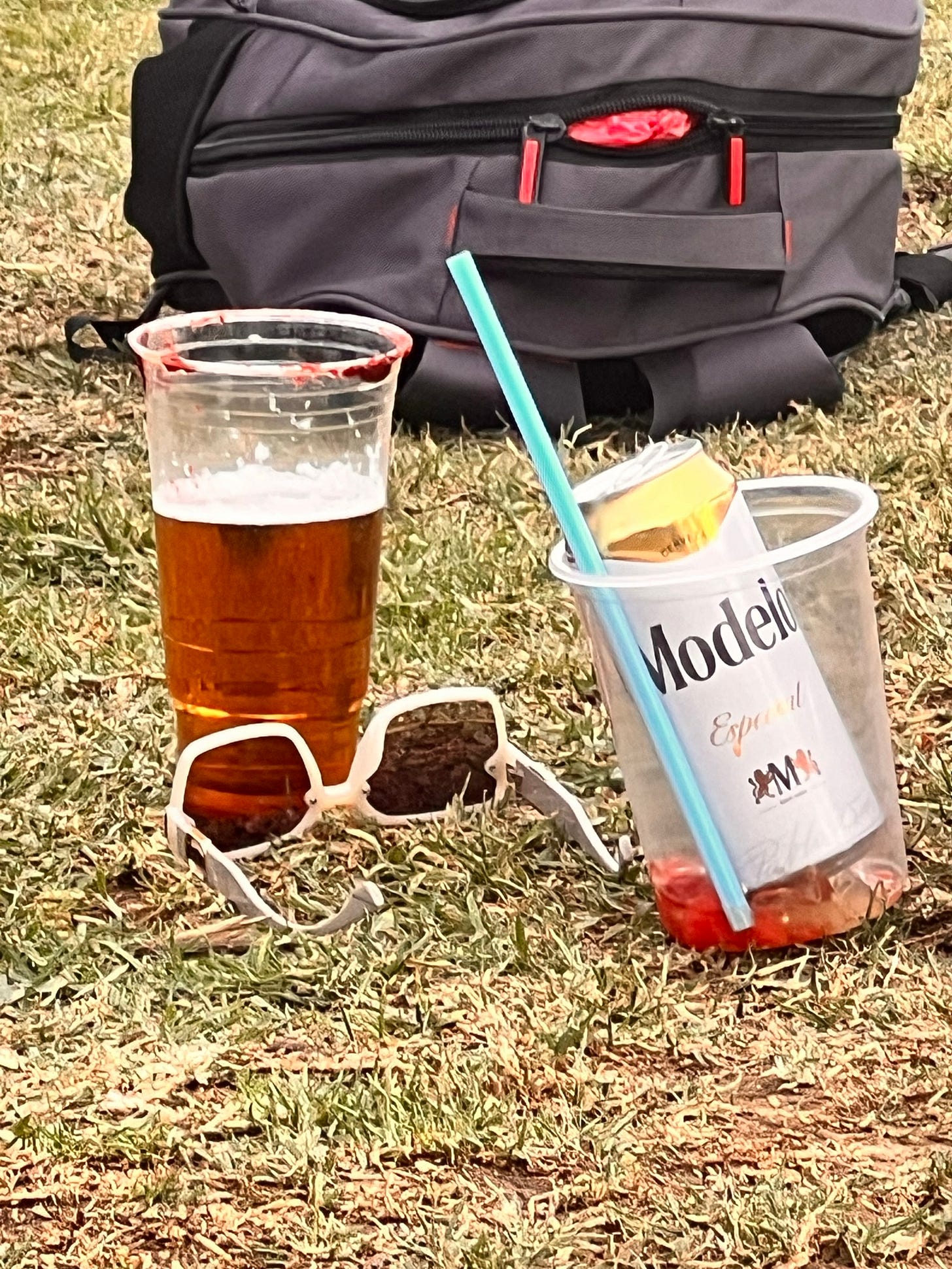
"colored goop smeared around the rim often encrusted with small edible pebbles of various kinds"
I'm licking my lips too!
"pleasant beer-candy-cereal" right on